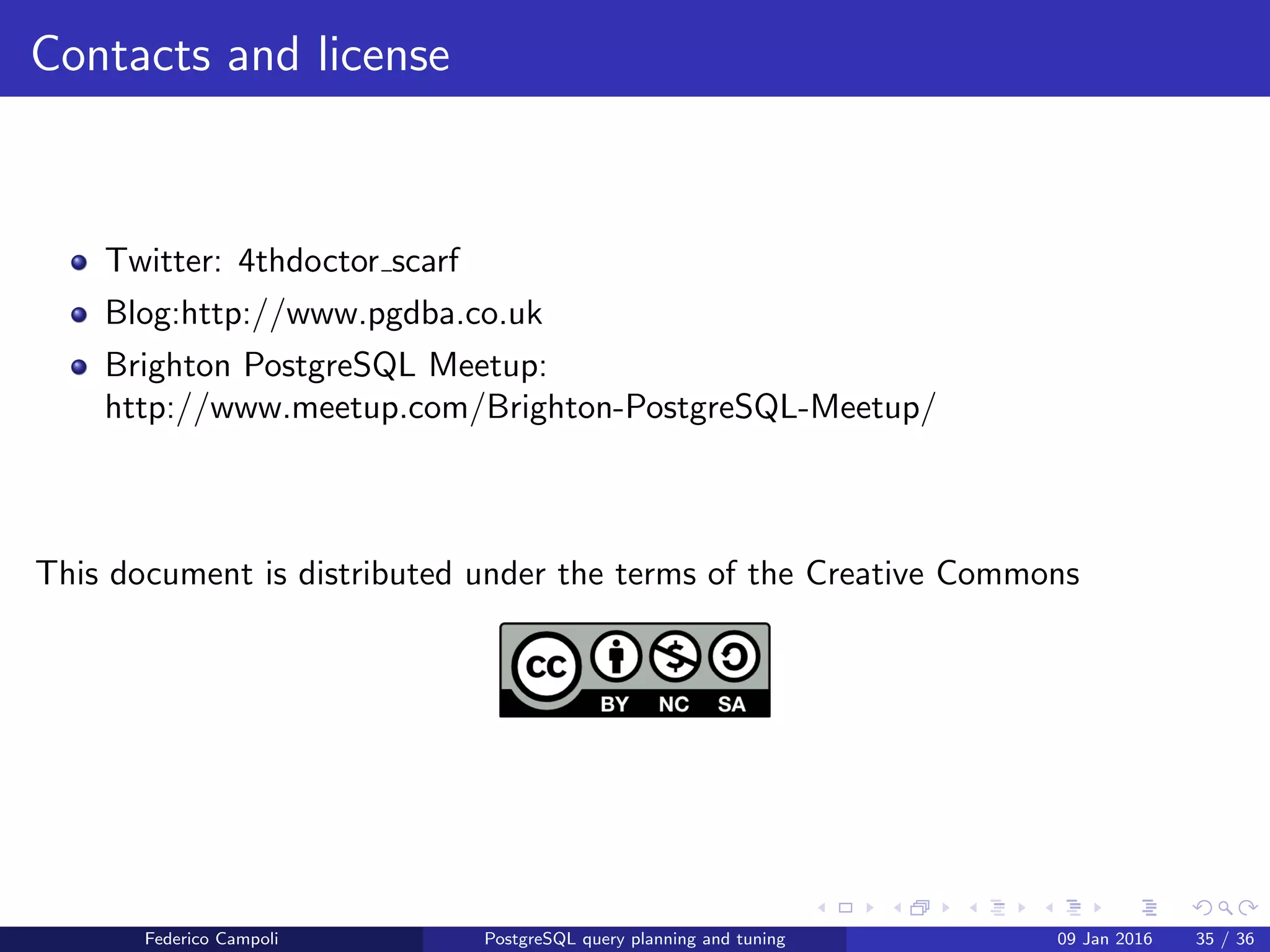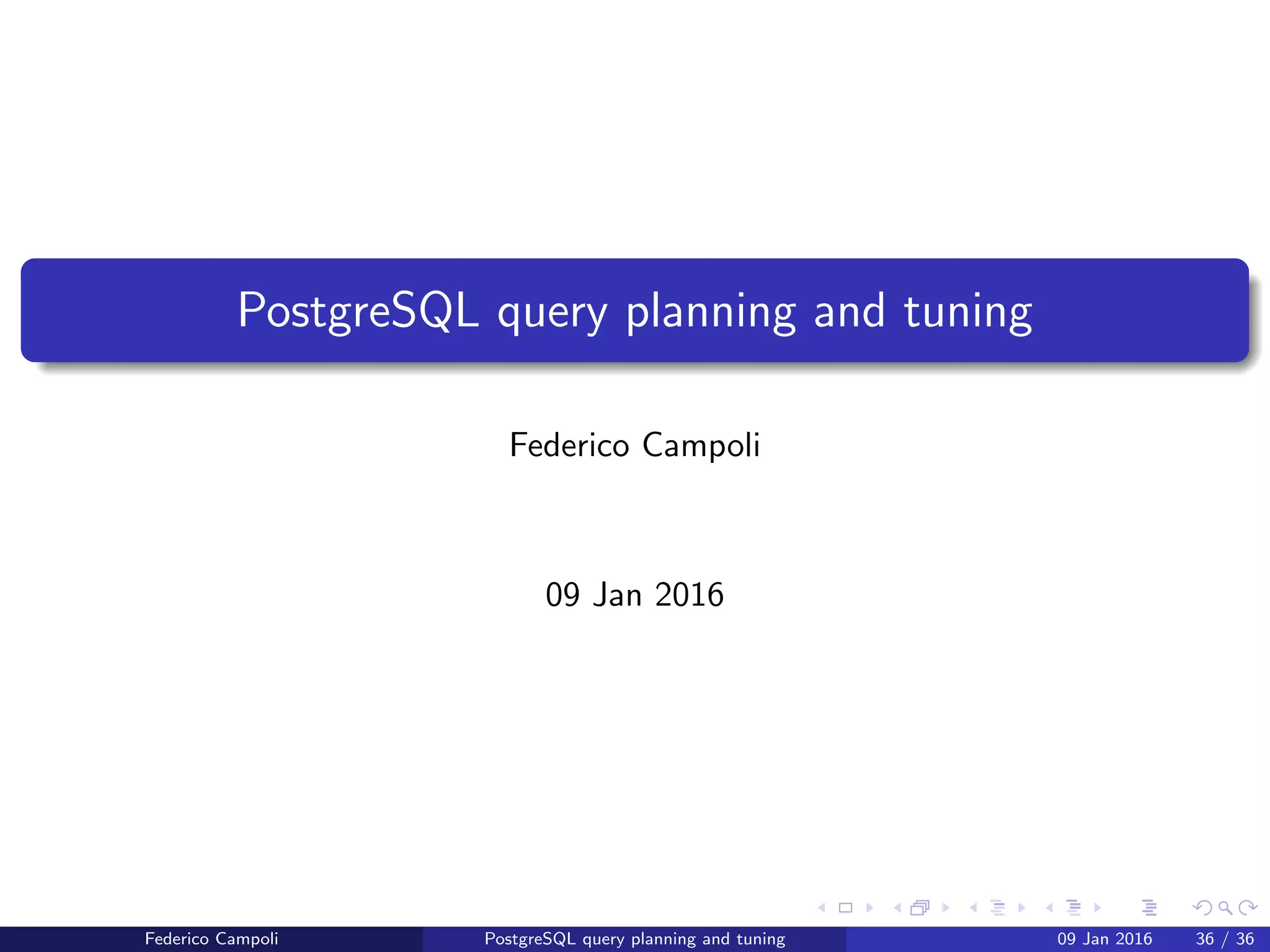The document discusses PostgreSQL query planning and tuning. It covers the key stages of query execution including syntax validation, query tree generation, plan estimation, and execution. It describes different plan nodes like sequential scans, index scans, joins, and sorts. It emphasizes using EXPLAIN to view and analyze the execution plan for a query, which can help identify performance issues and opportunities for optimization. EXPLAIN shows the estimated plan while EXPLAIN ANALYZE shows the actual plan after executing the query.
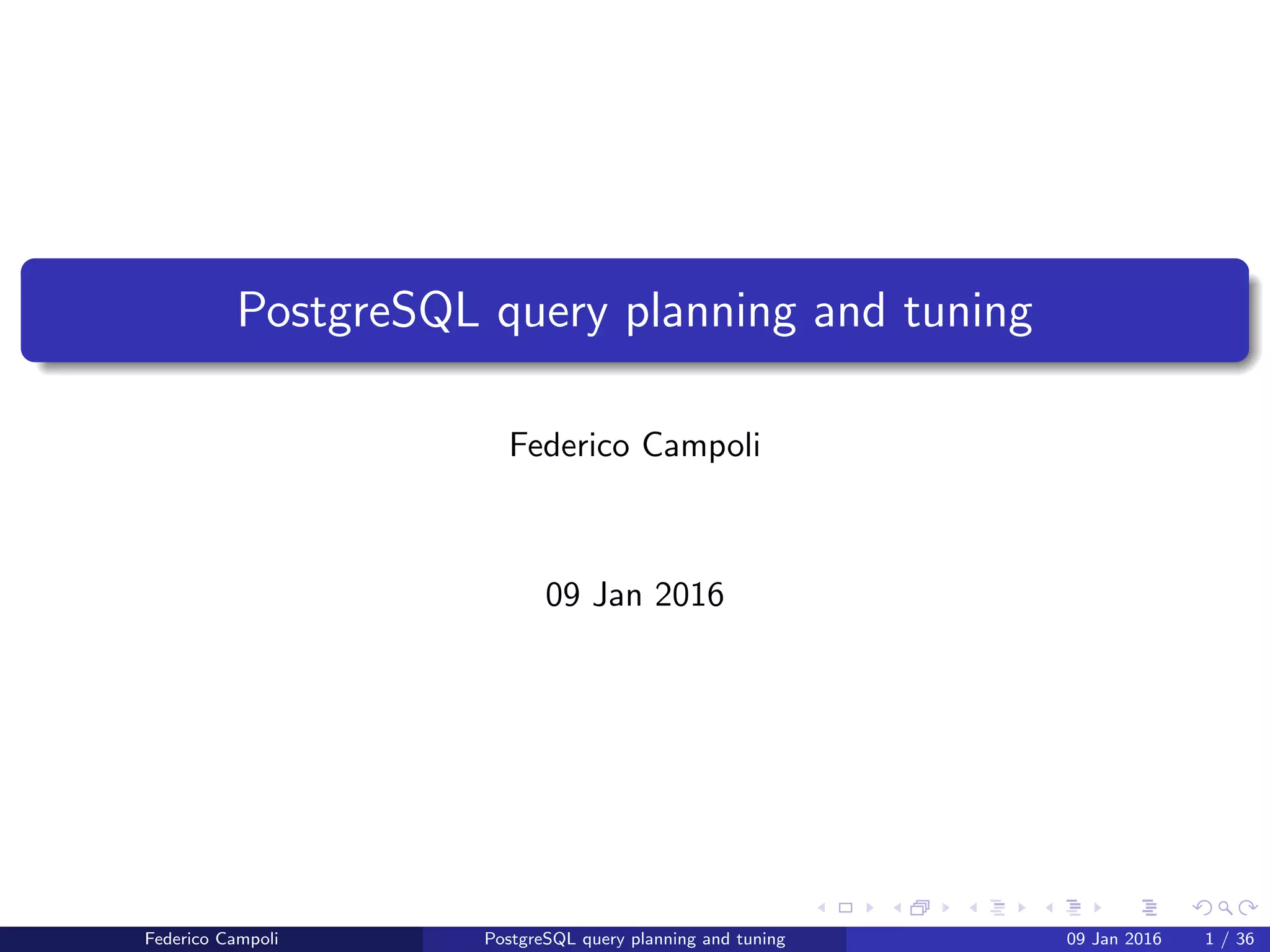
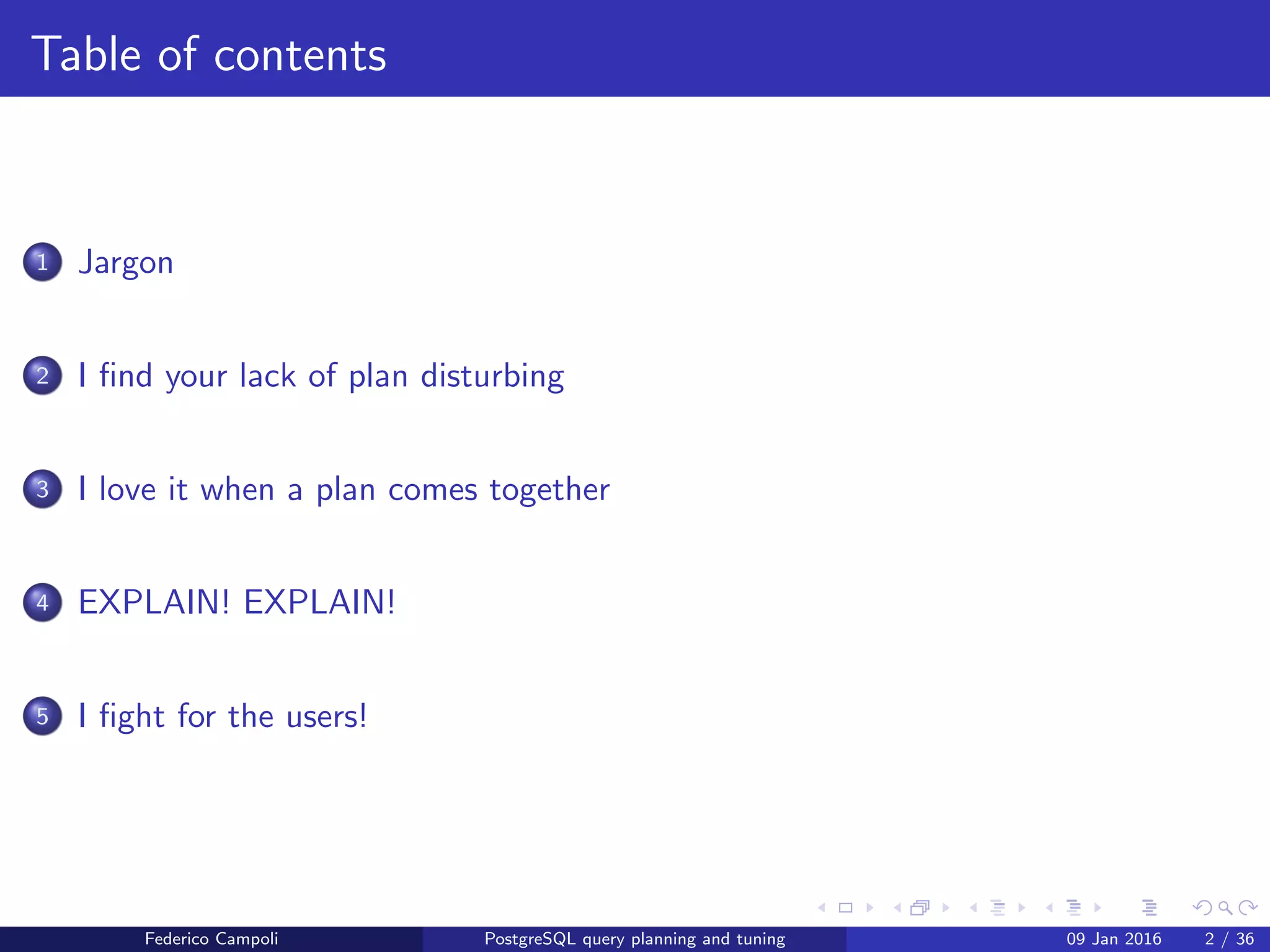
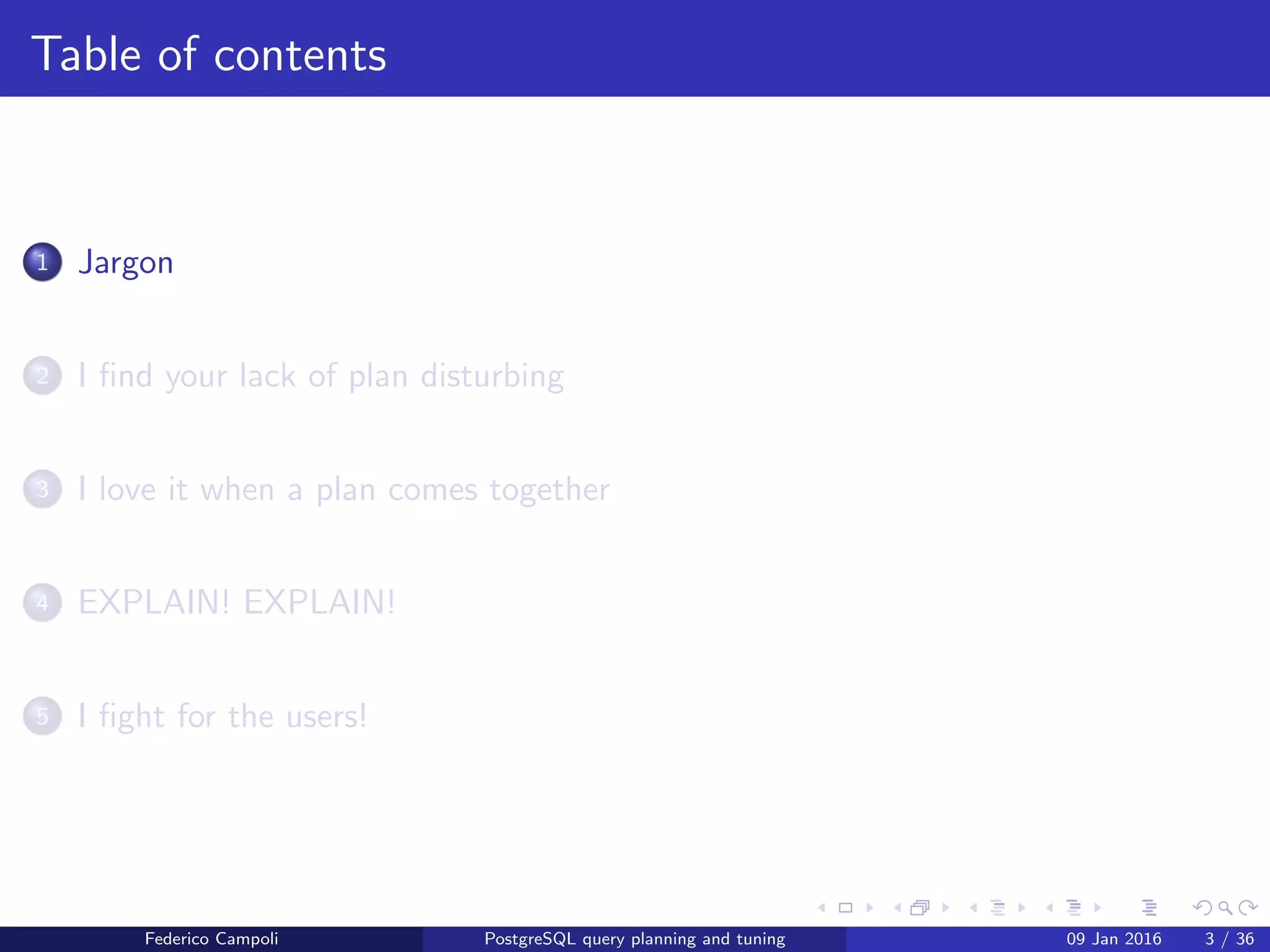
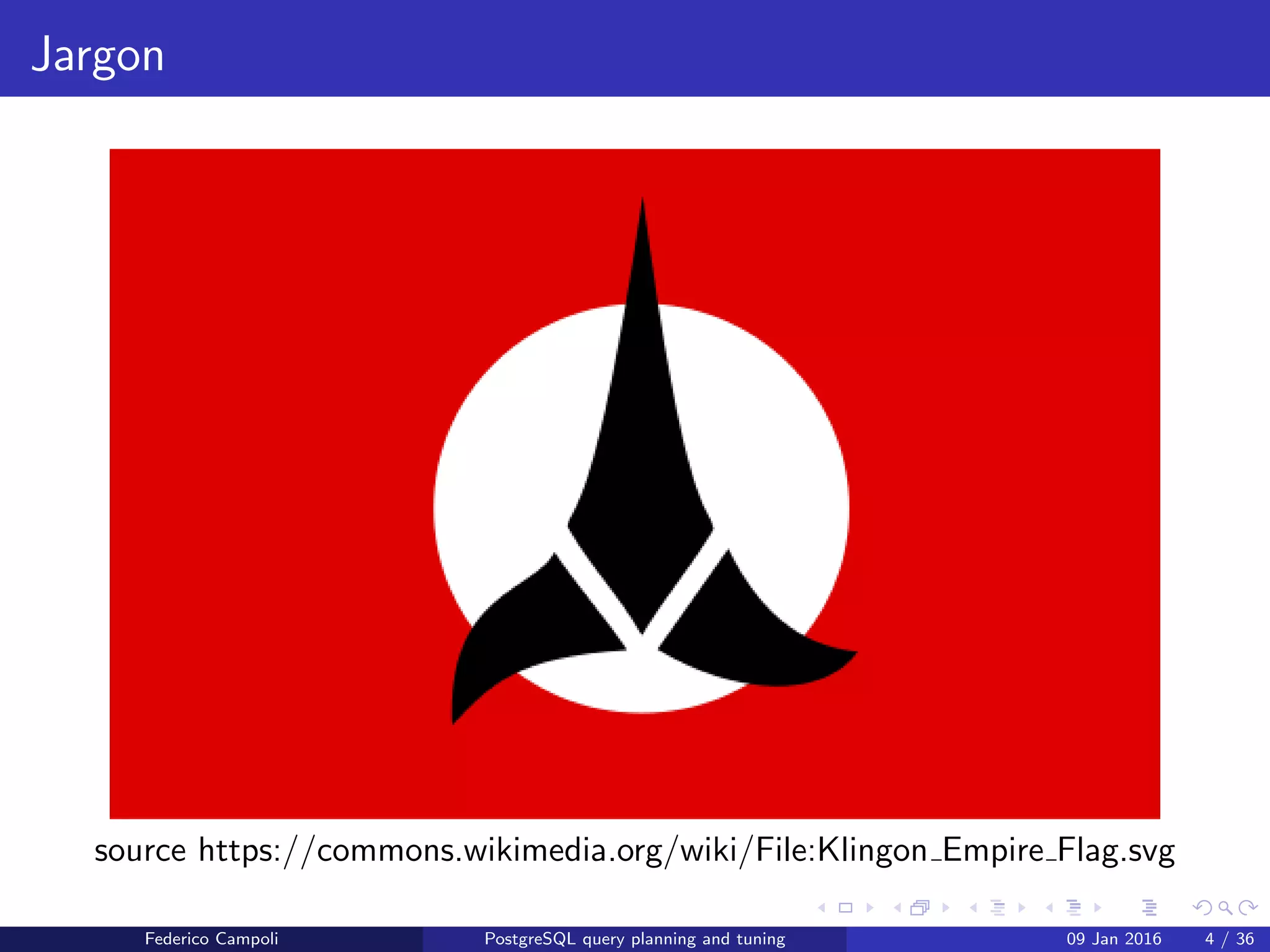
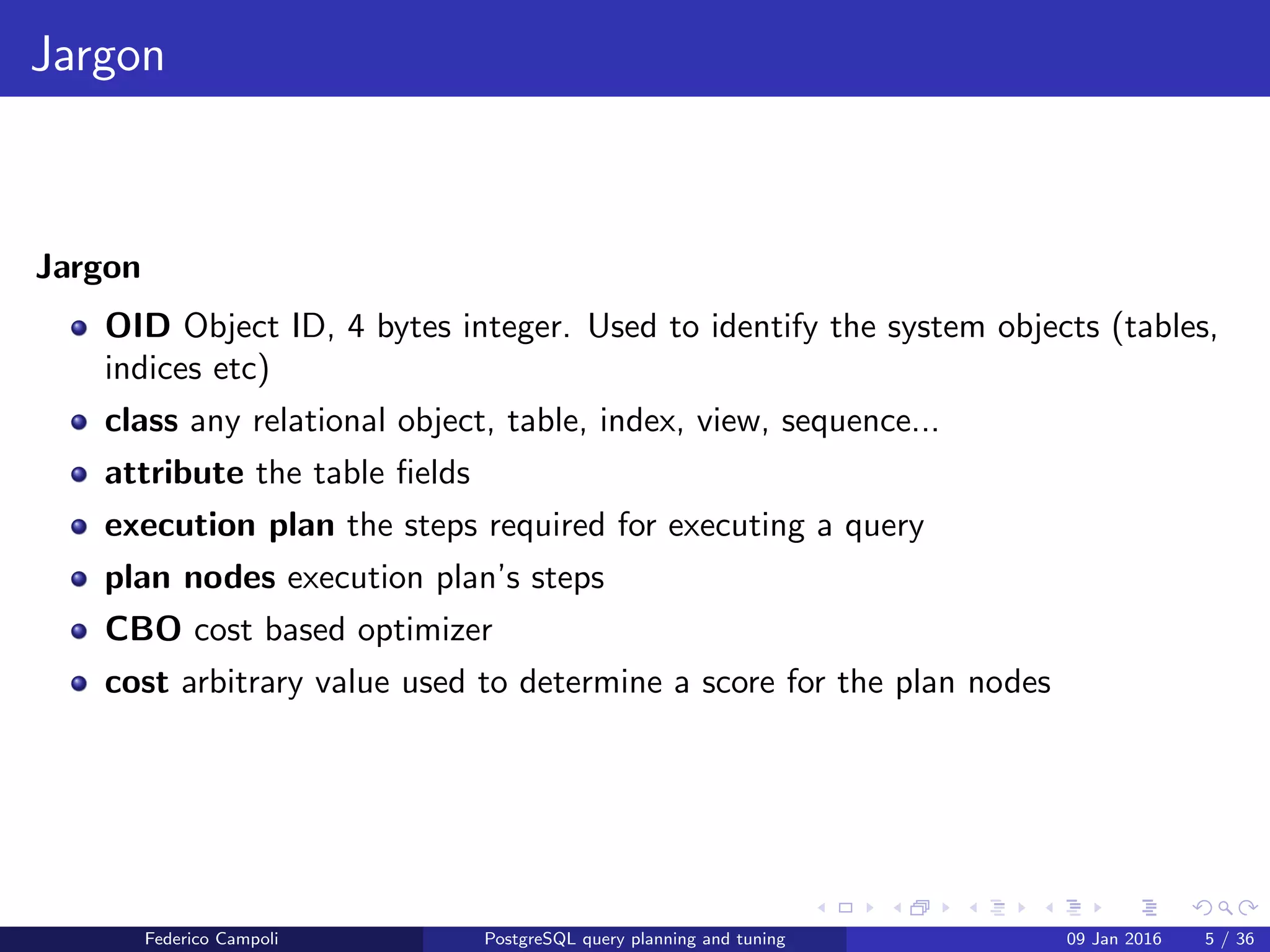
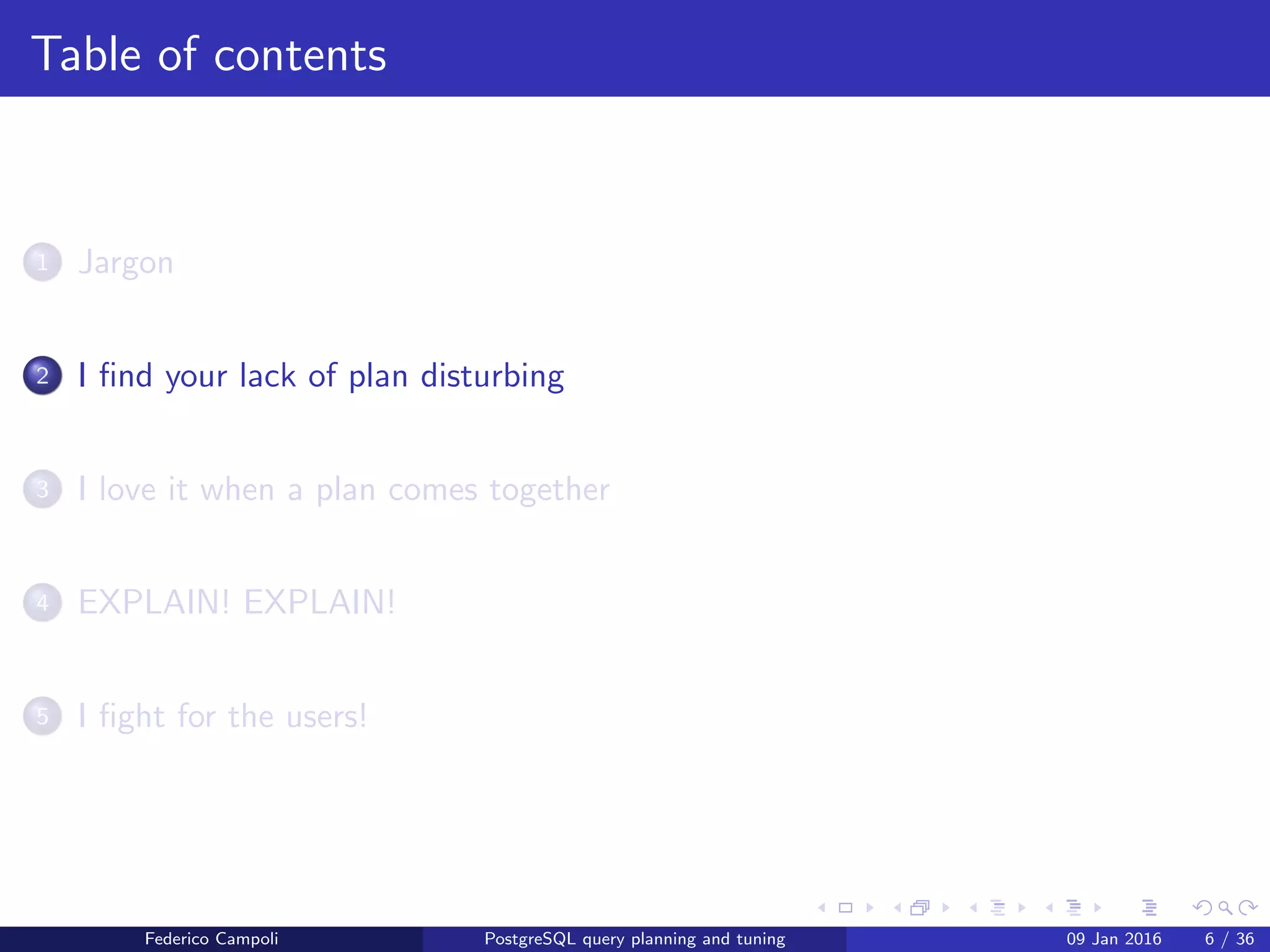
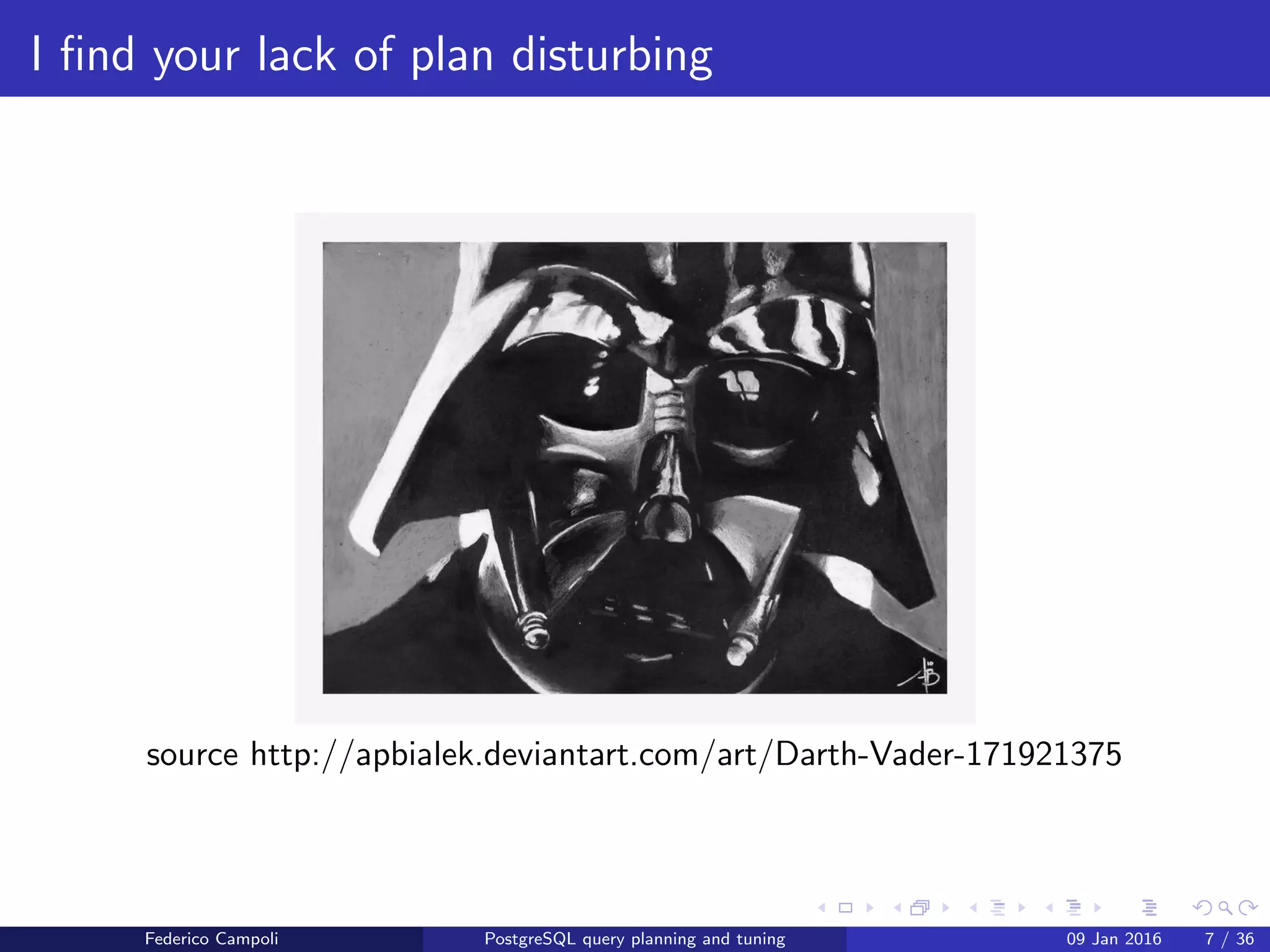
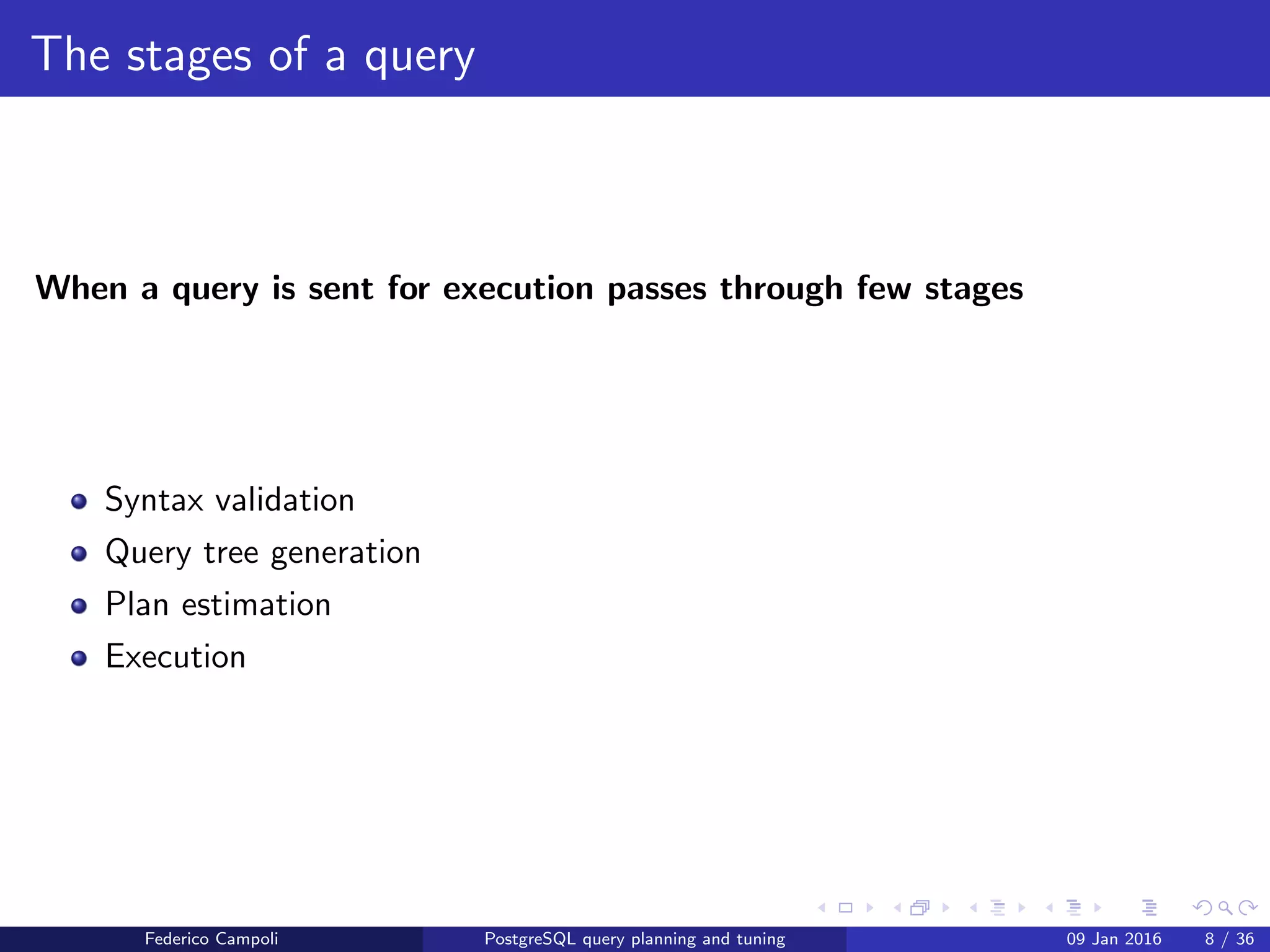
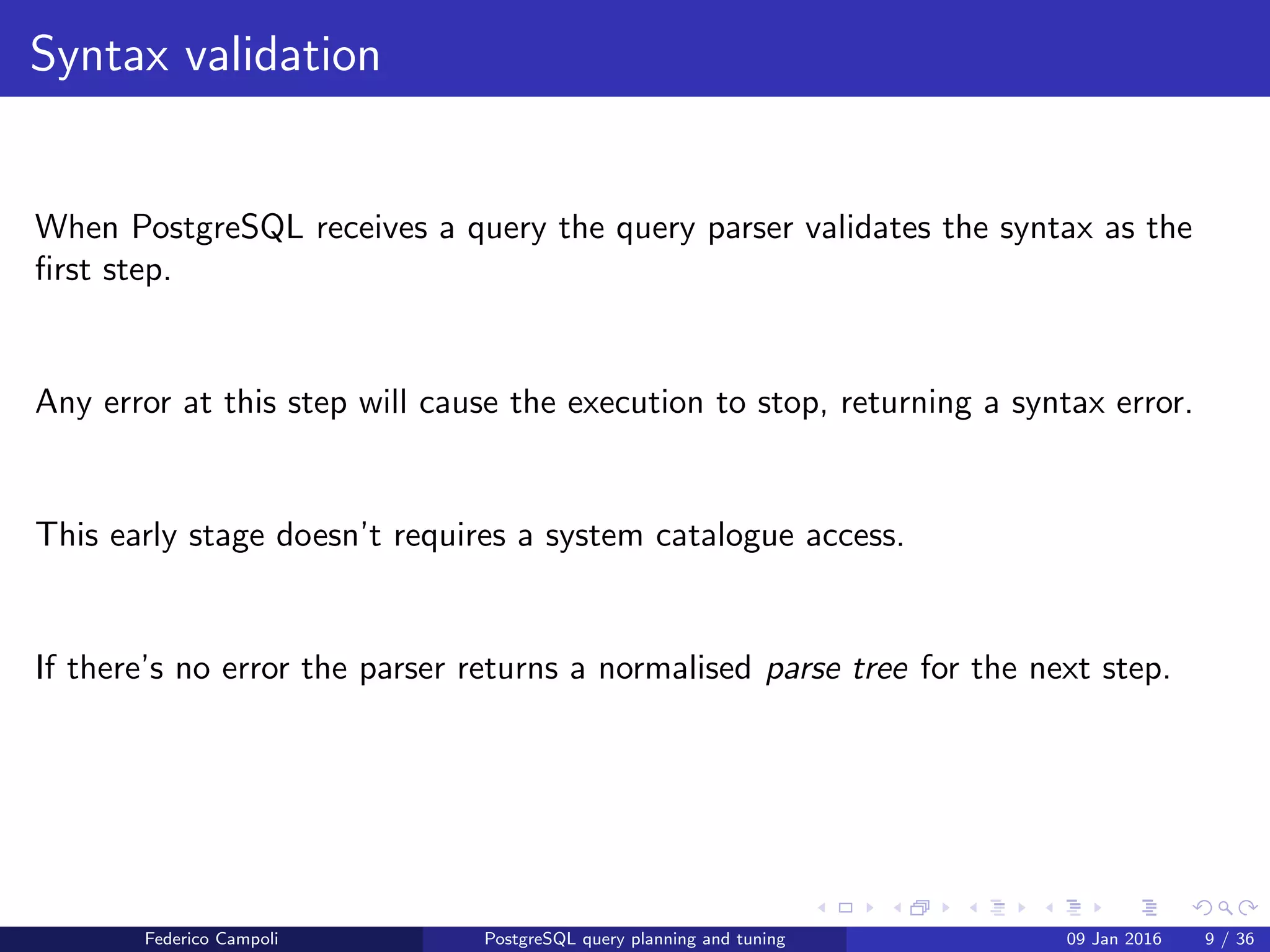
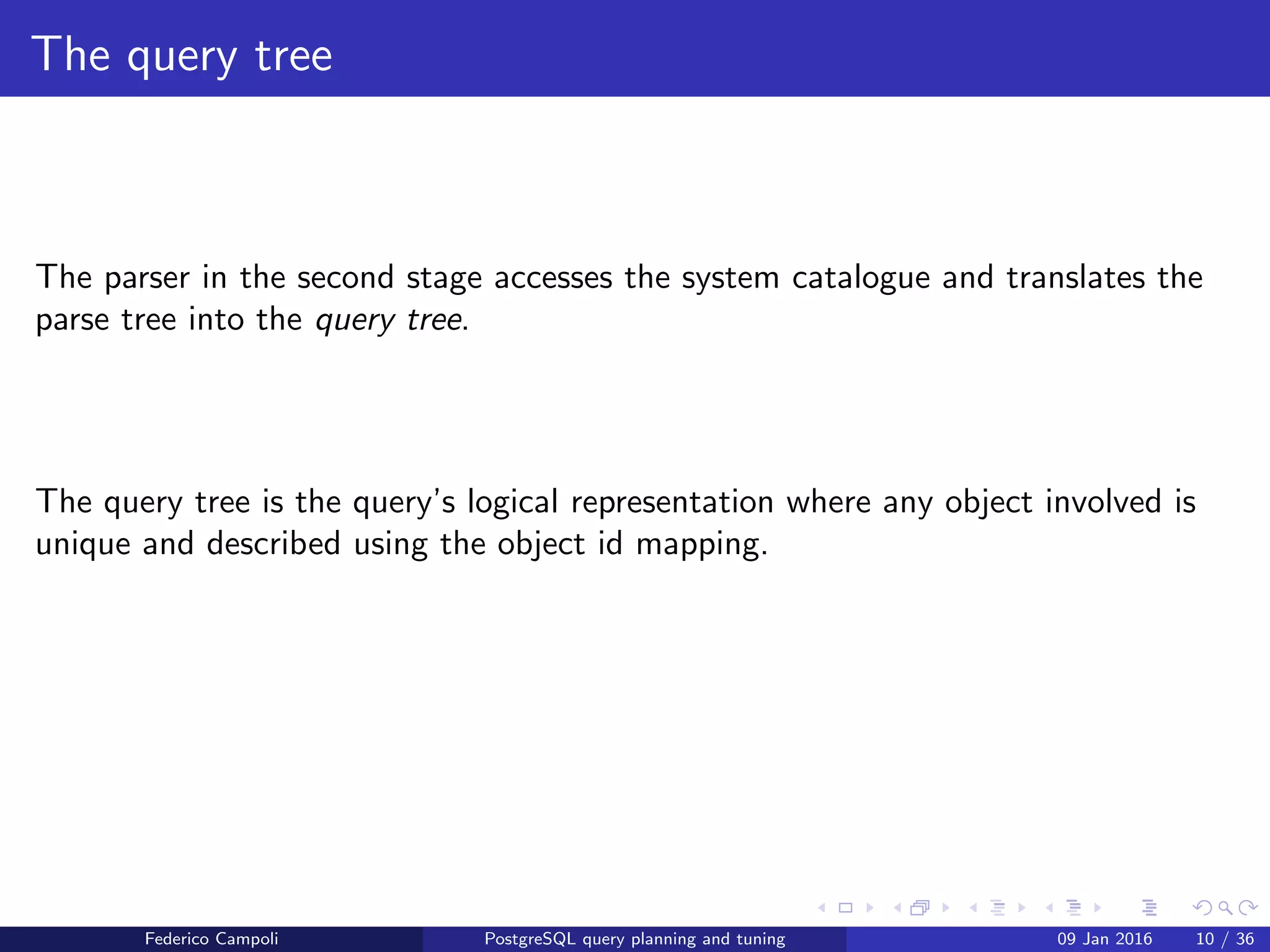
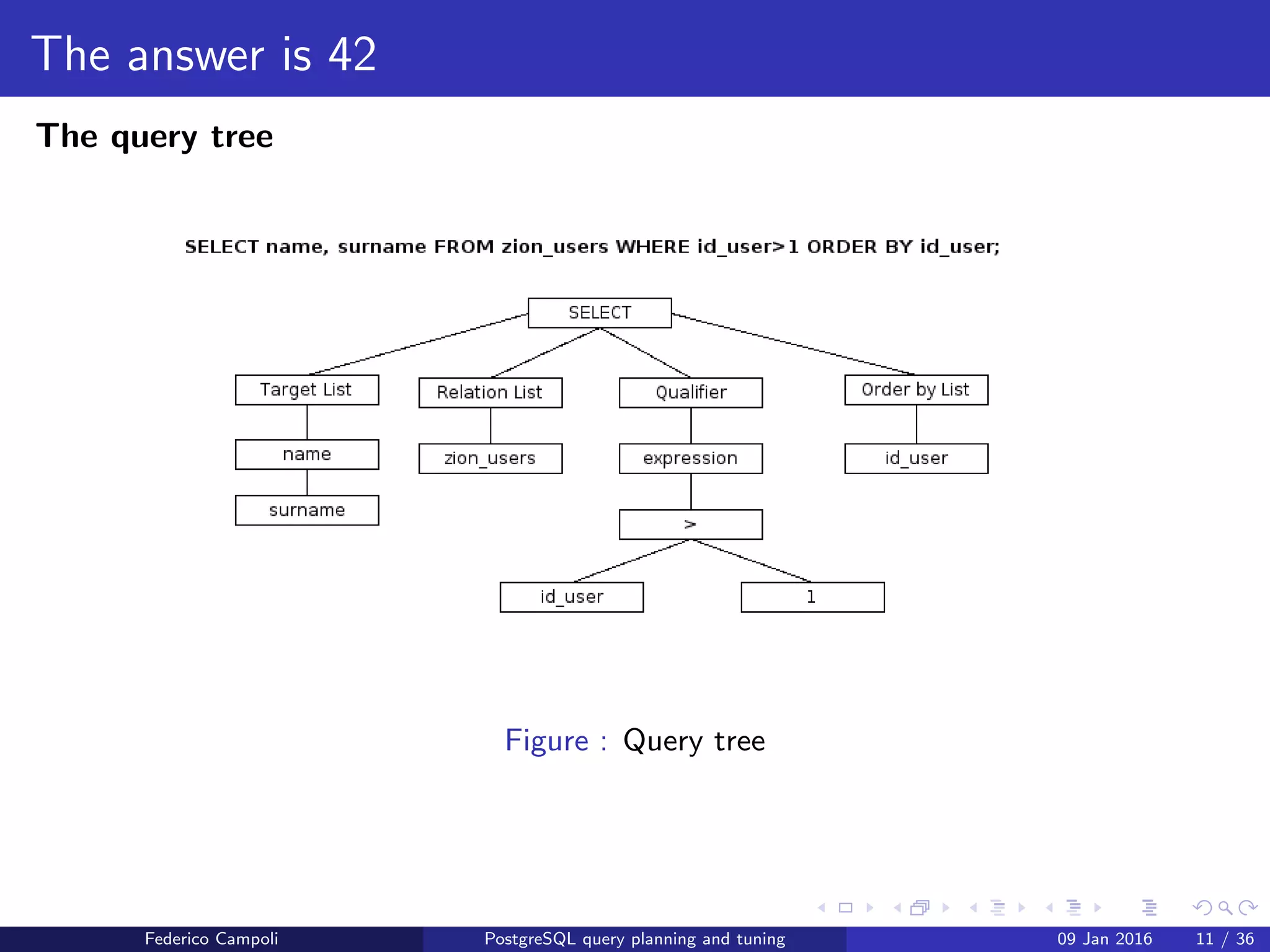
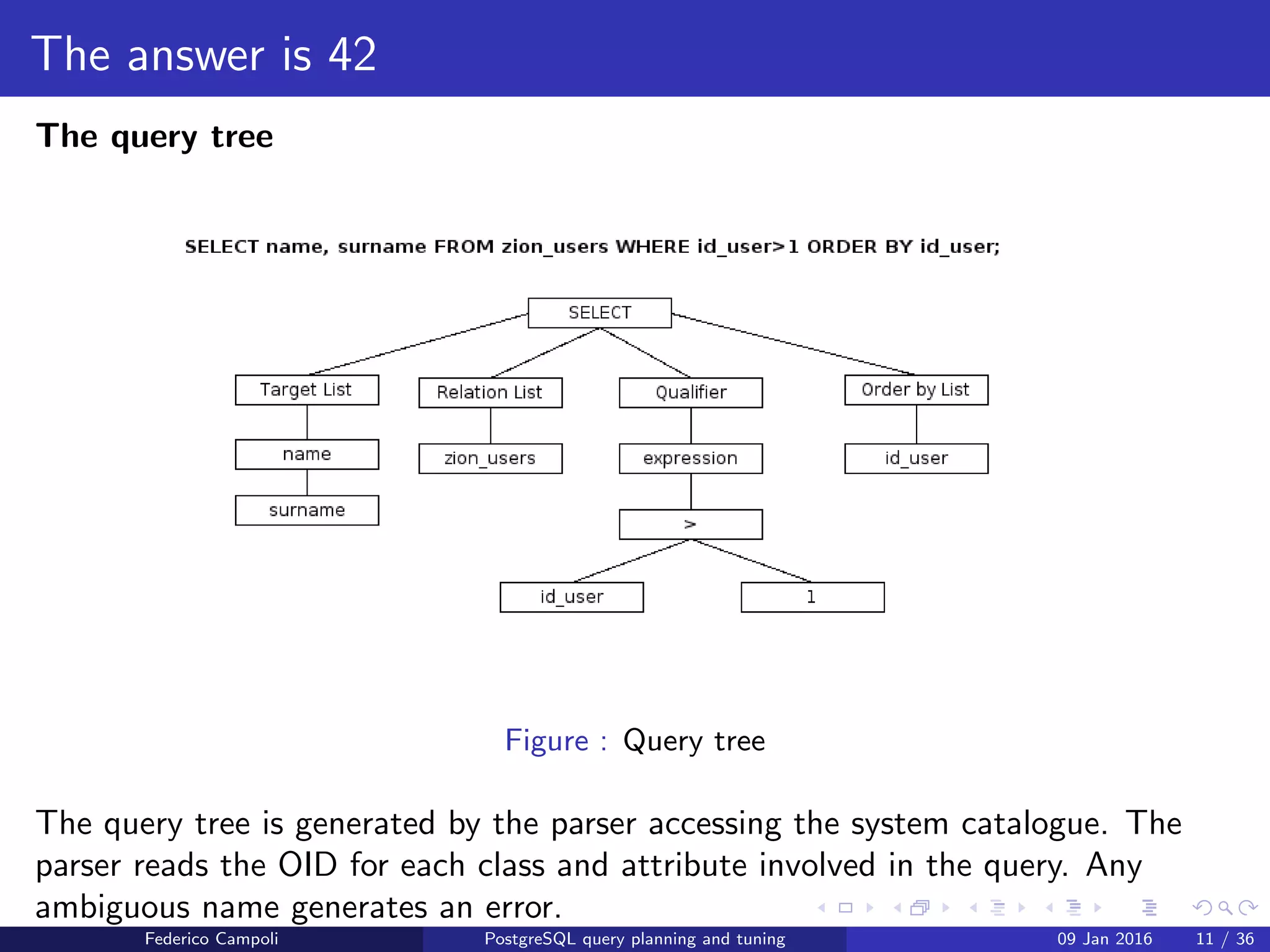
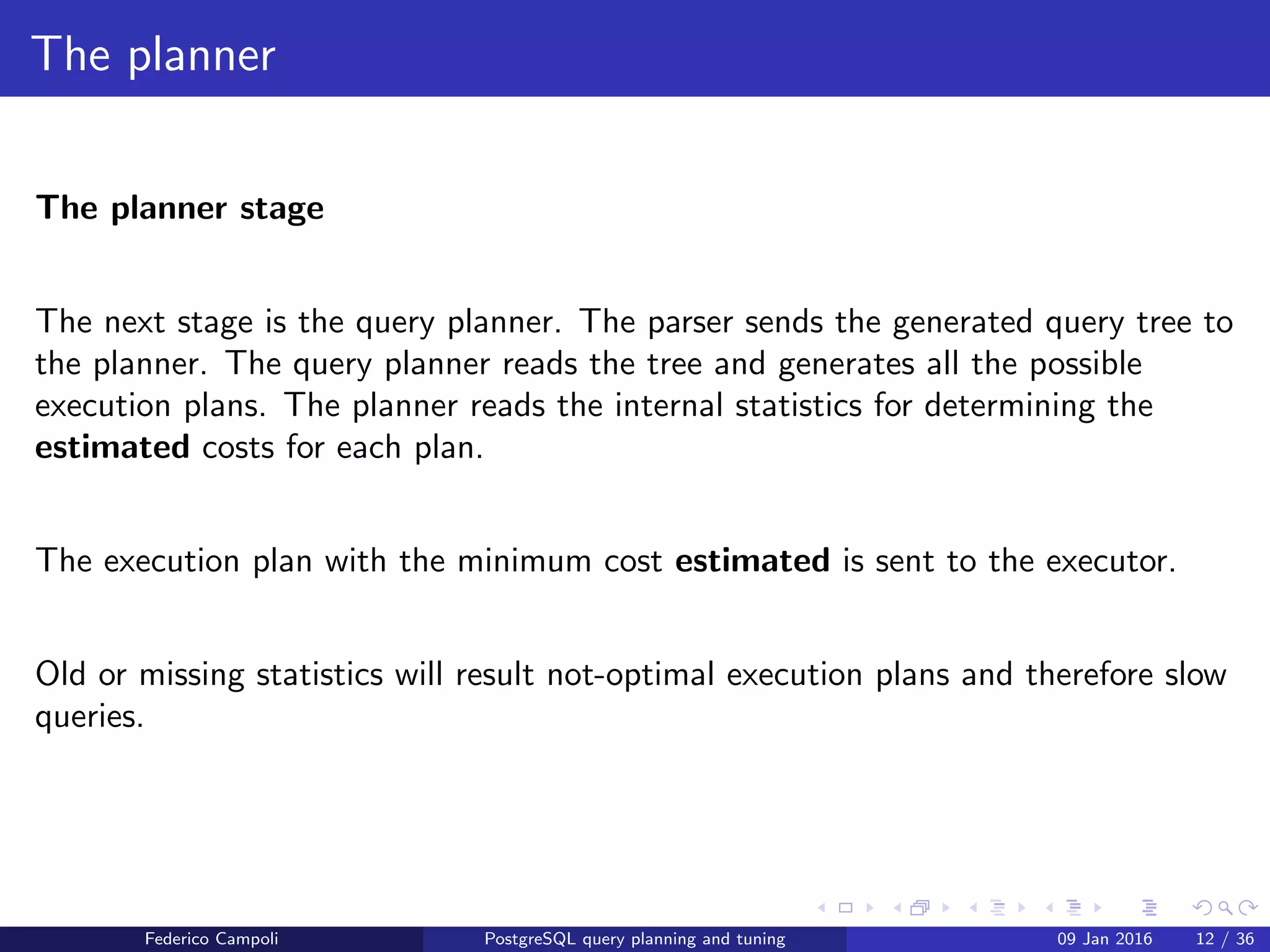

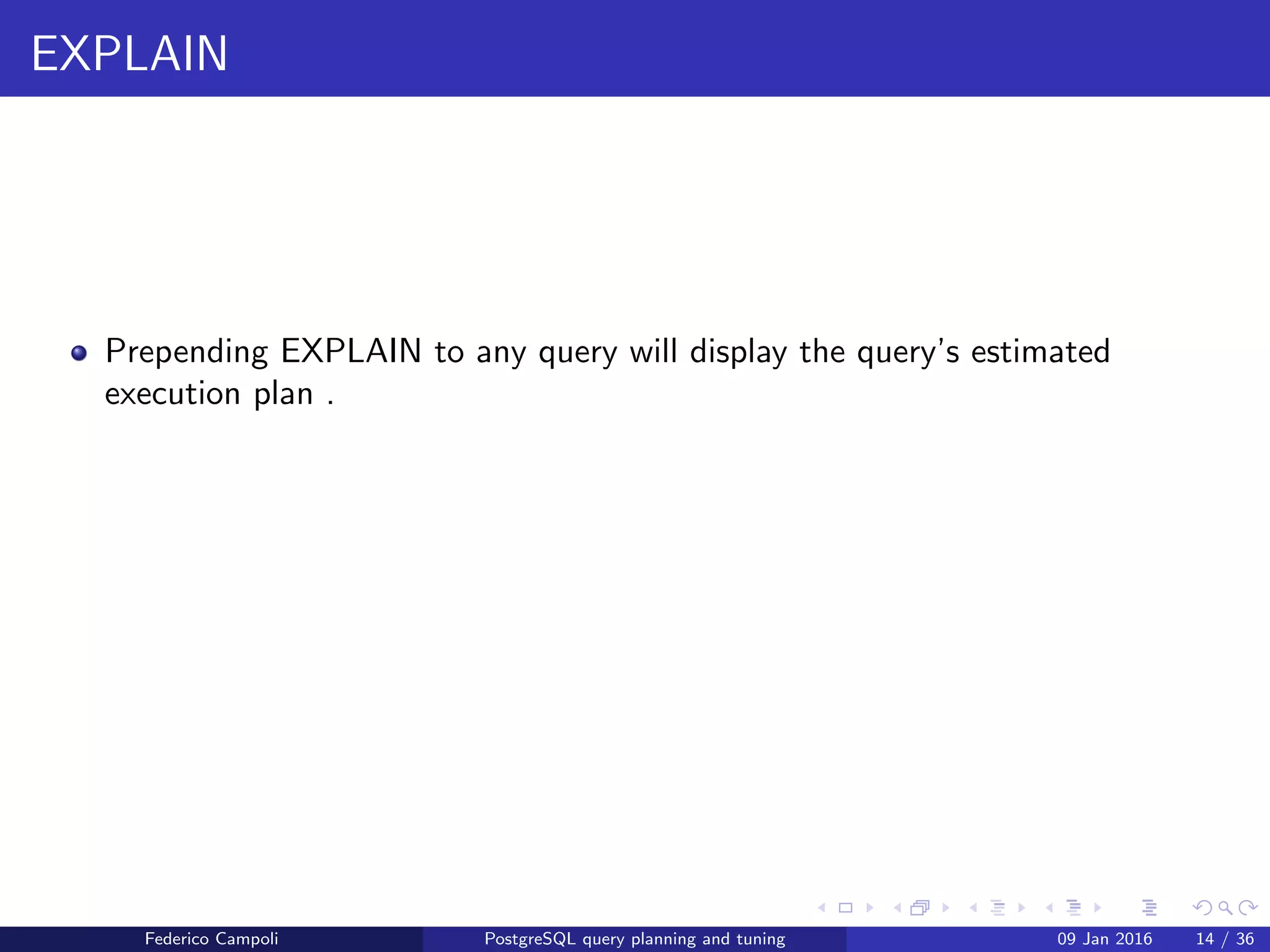
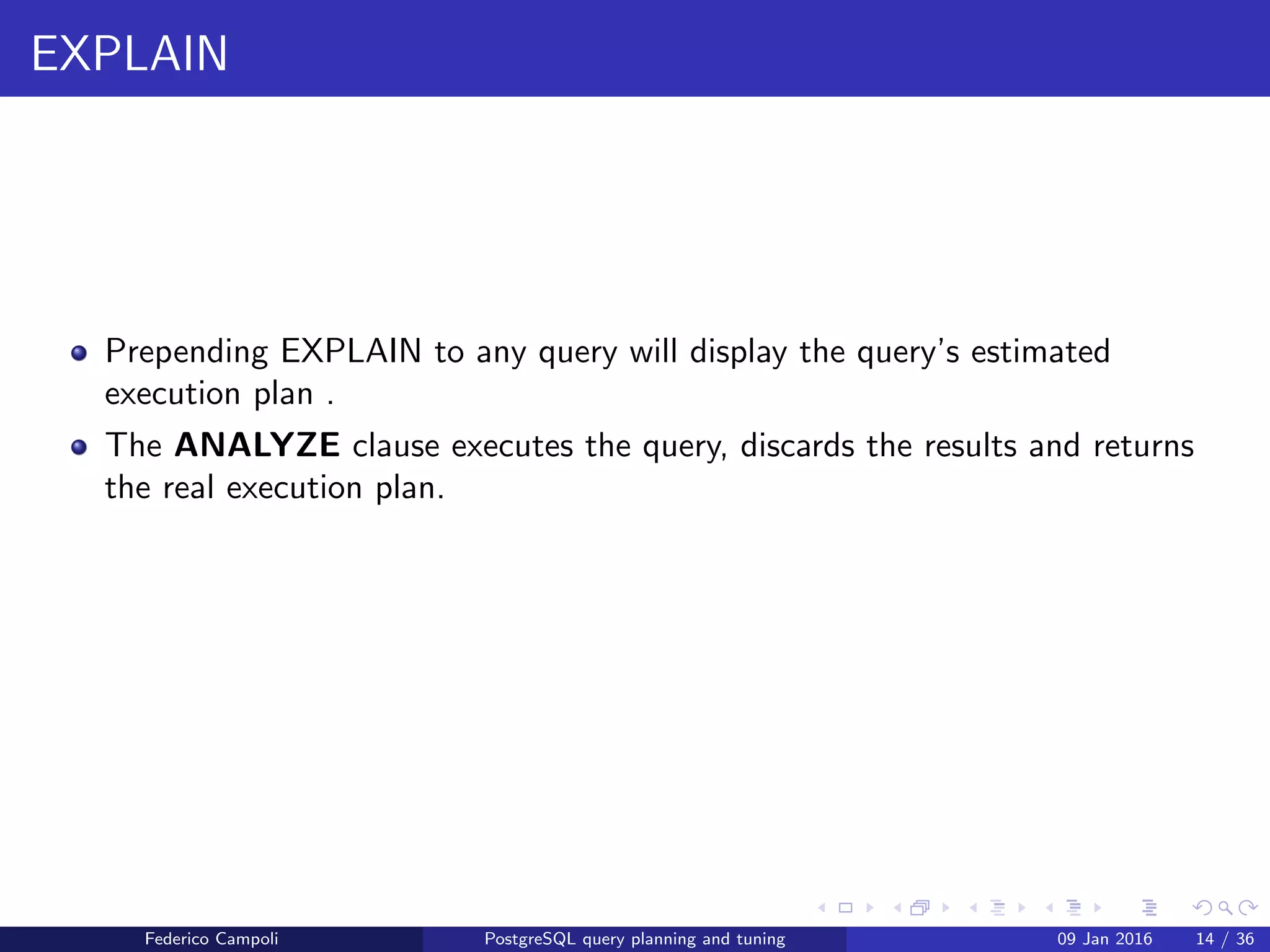
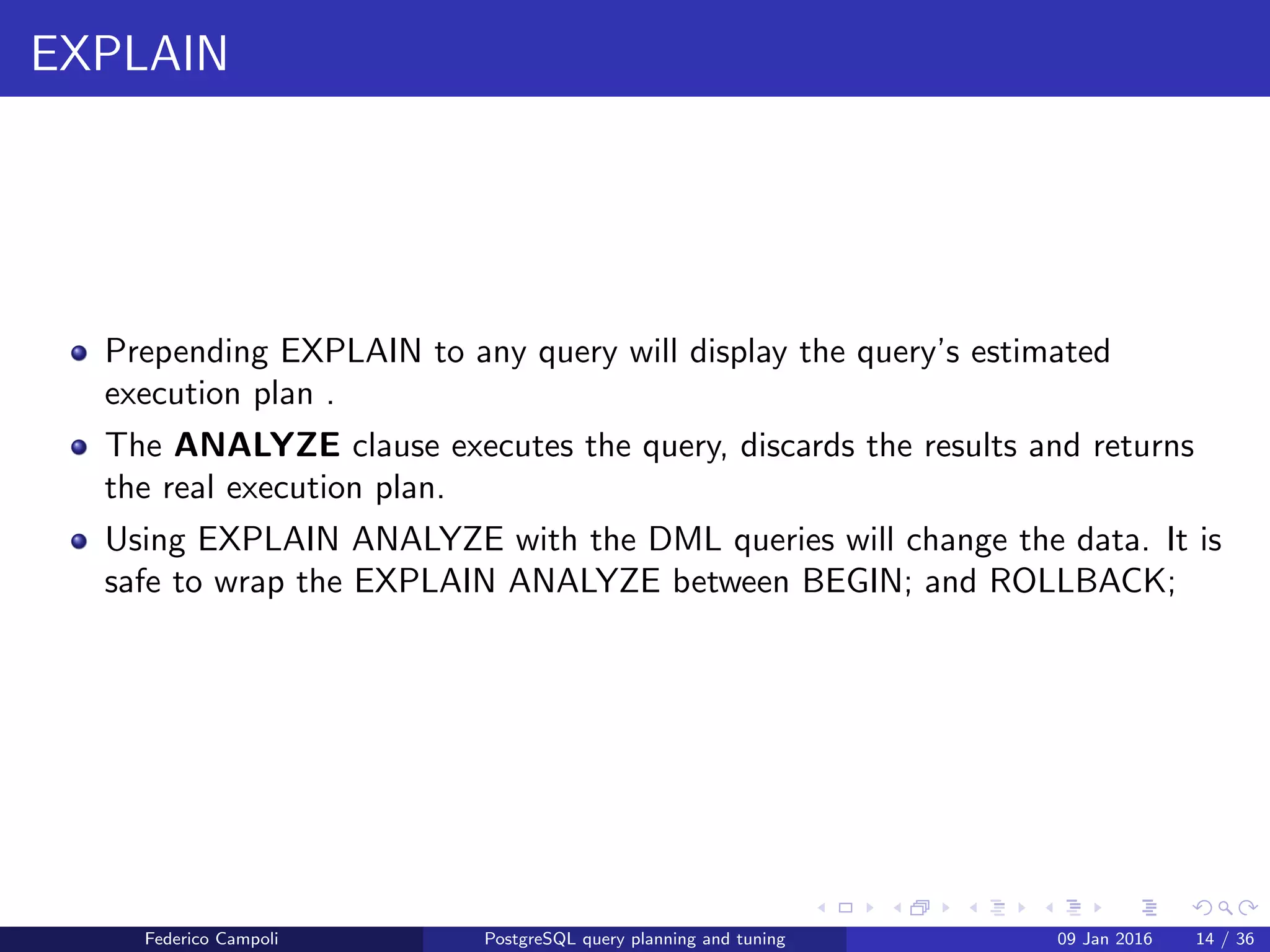
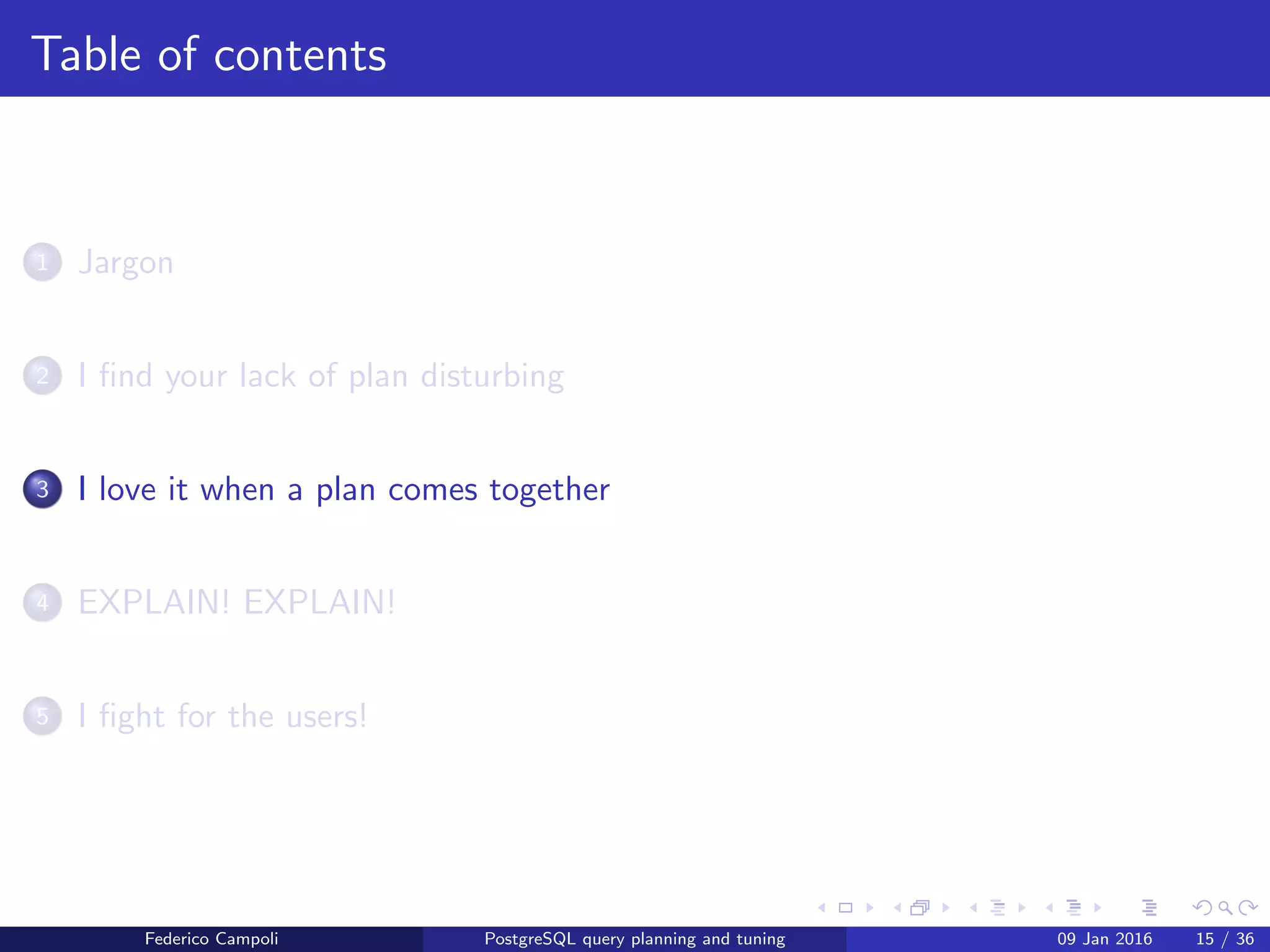

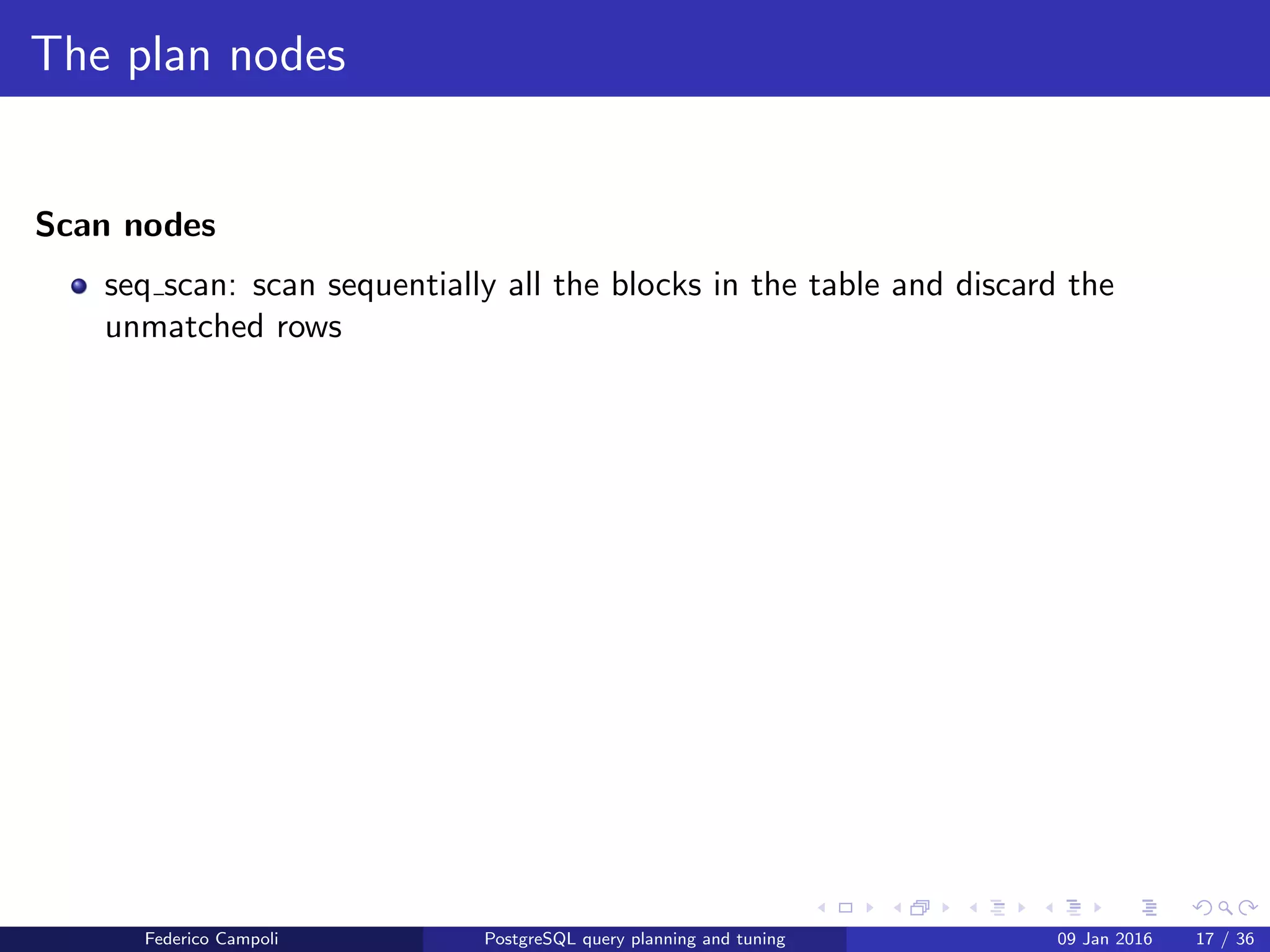
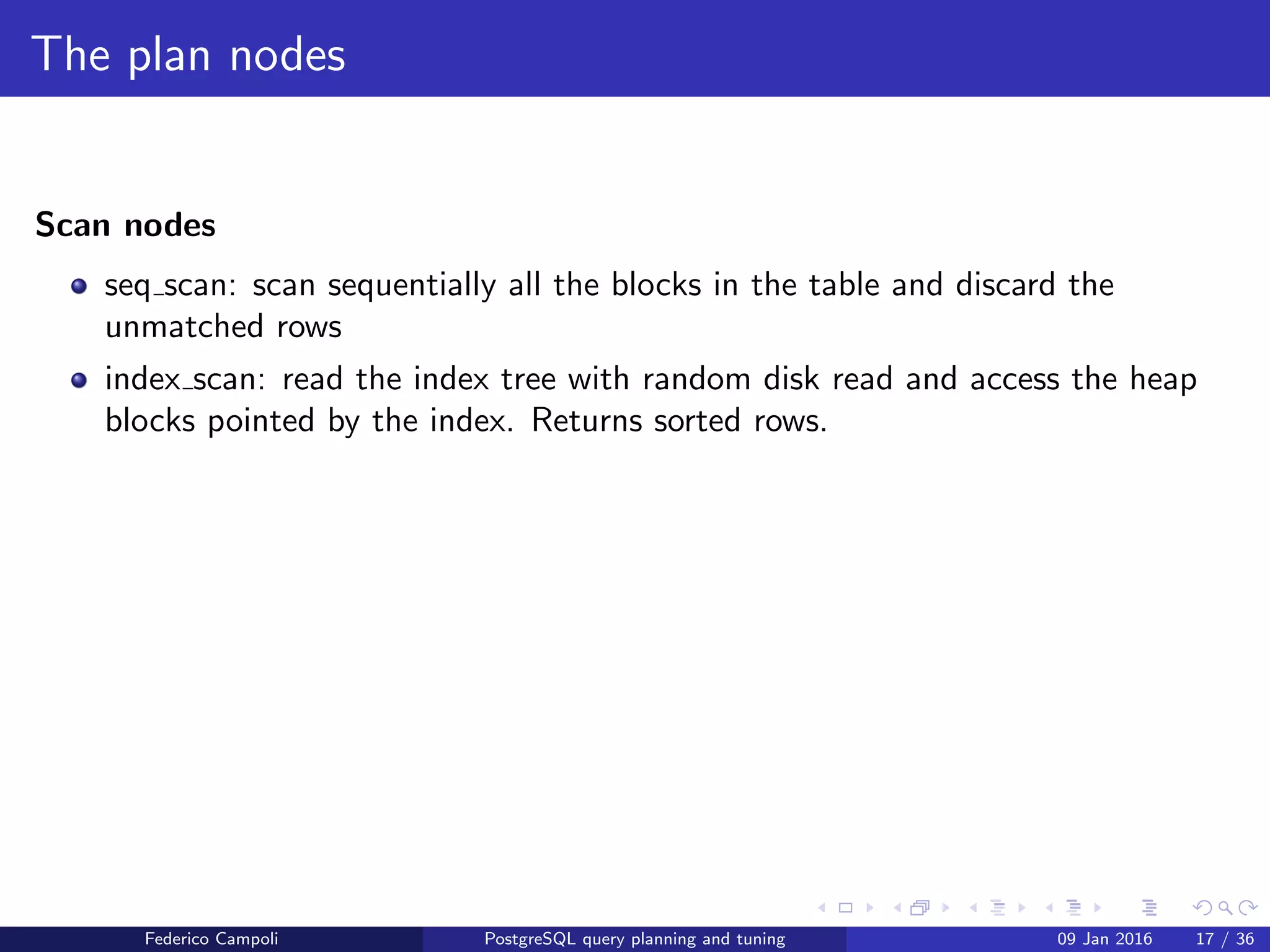
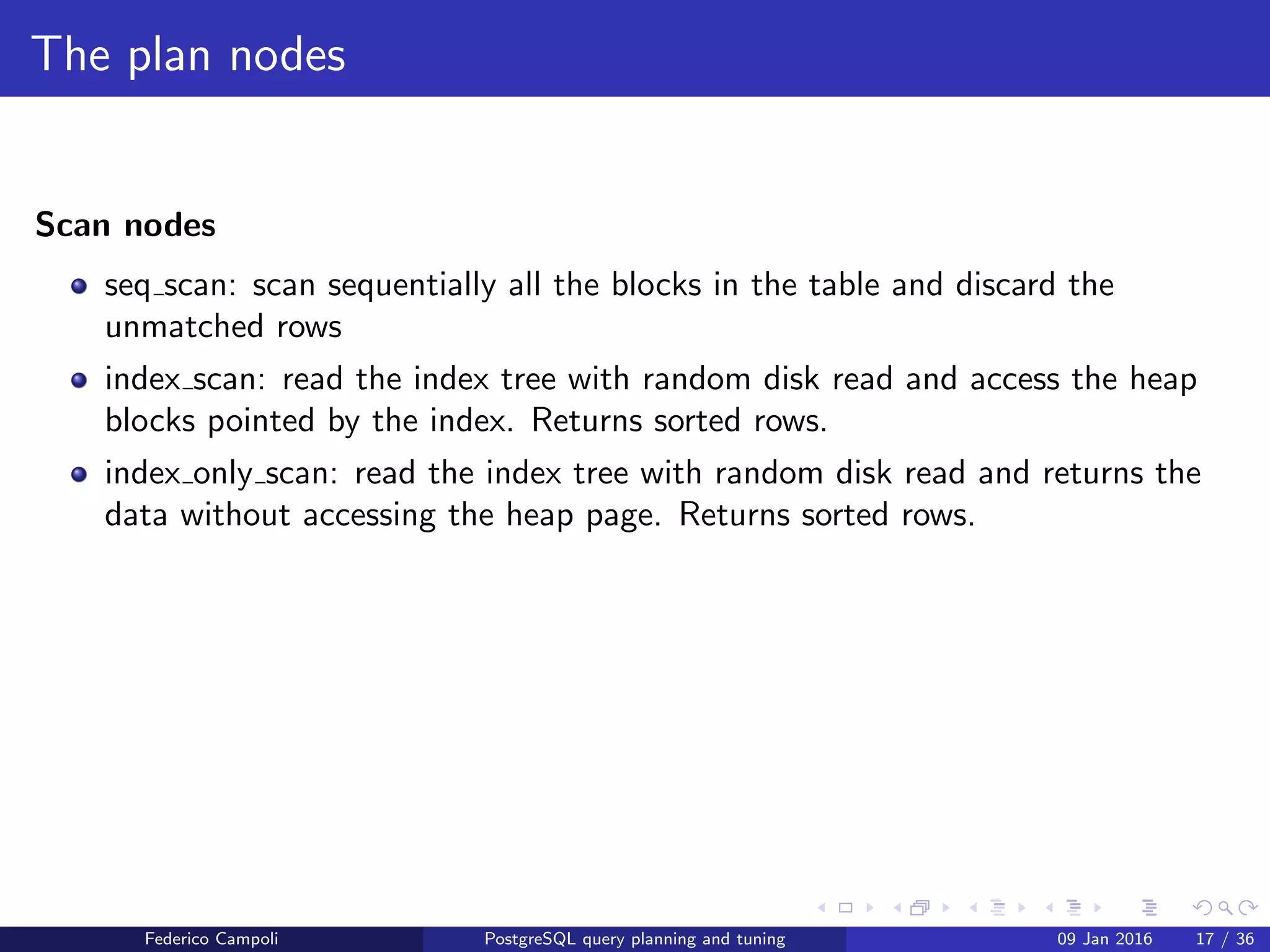
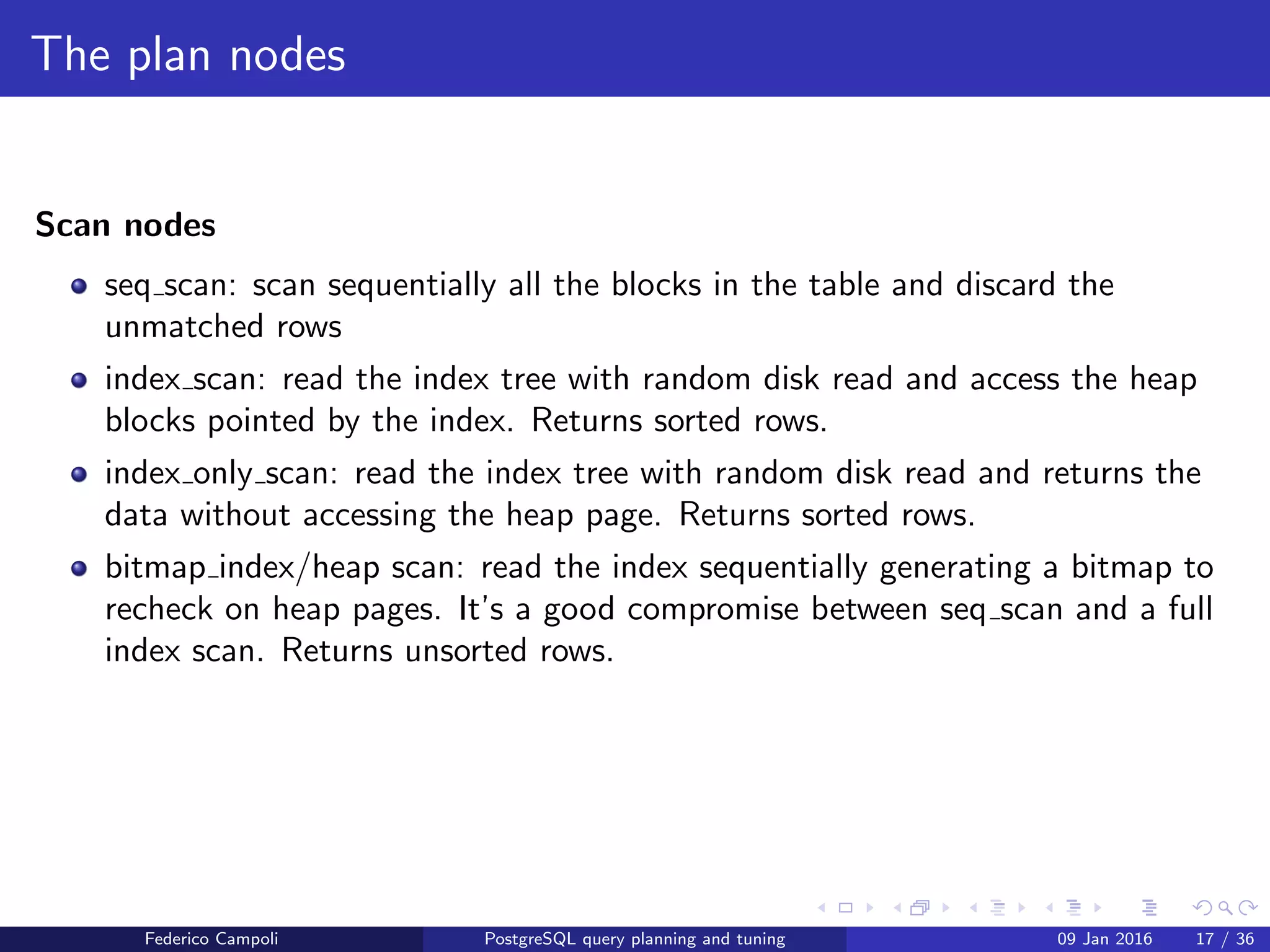
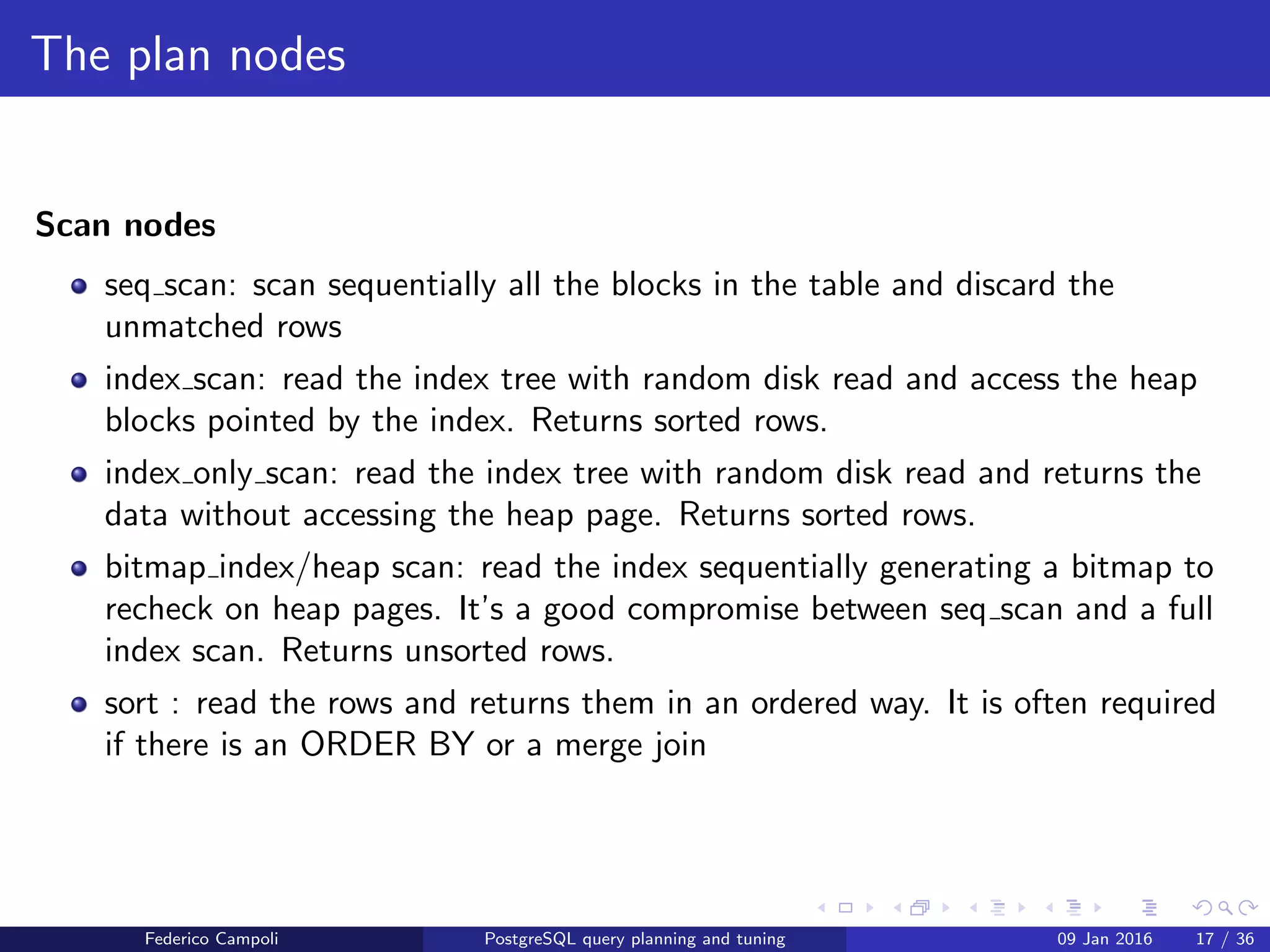
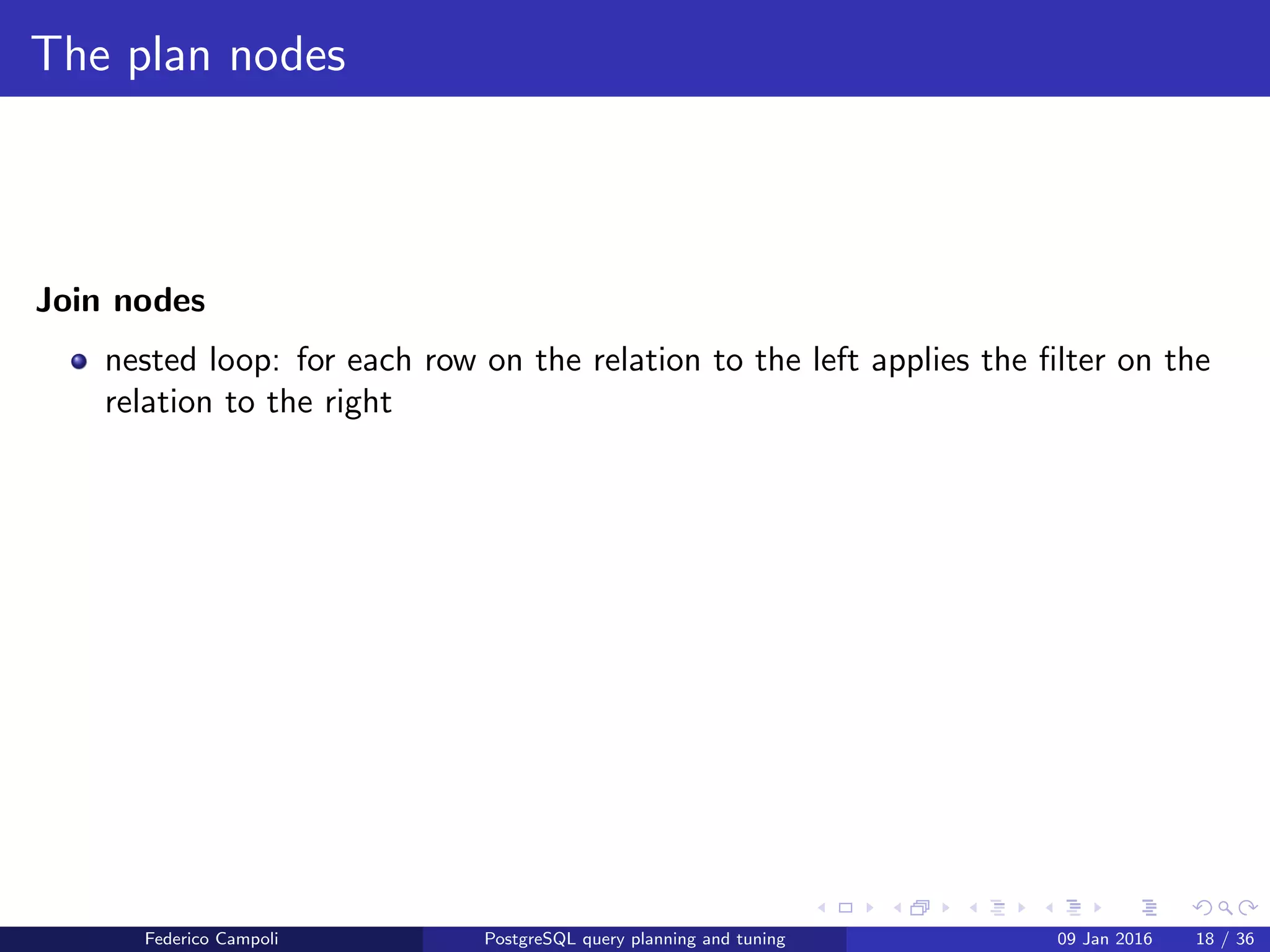
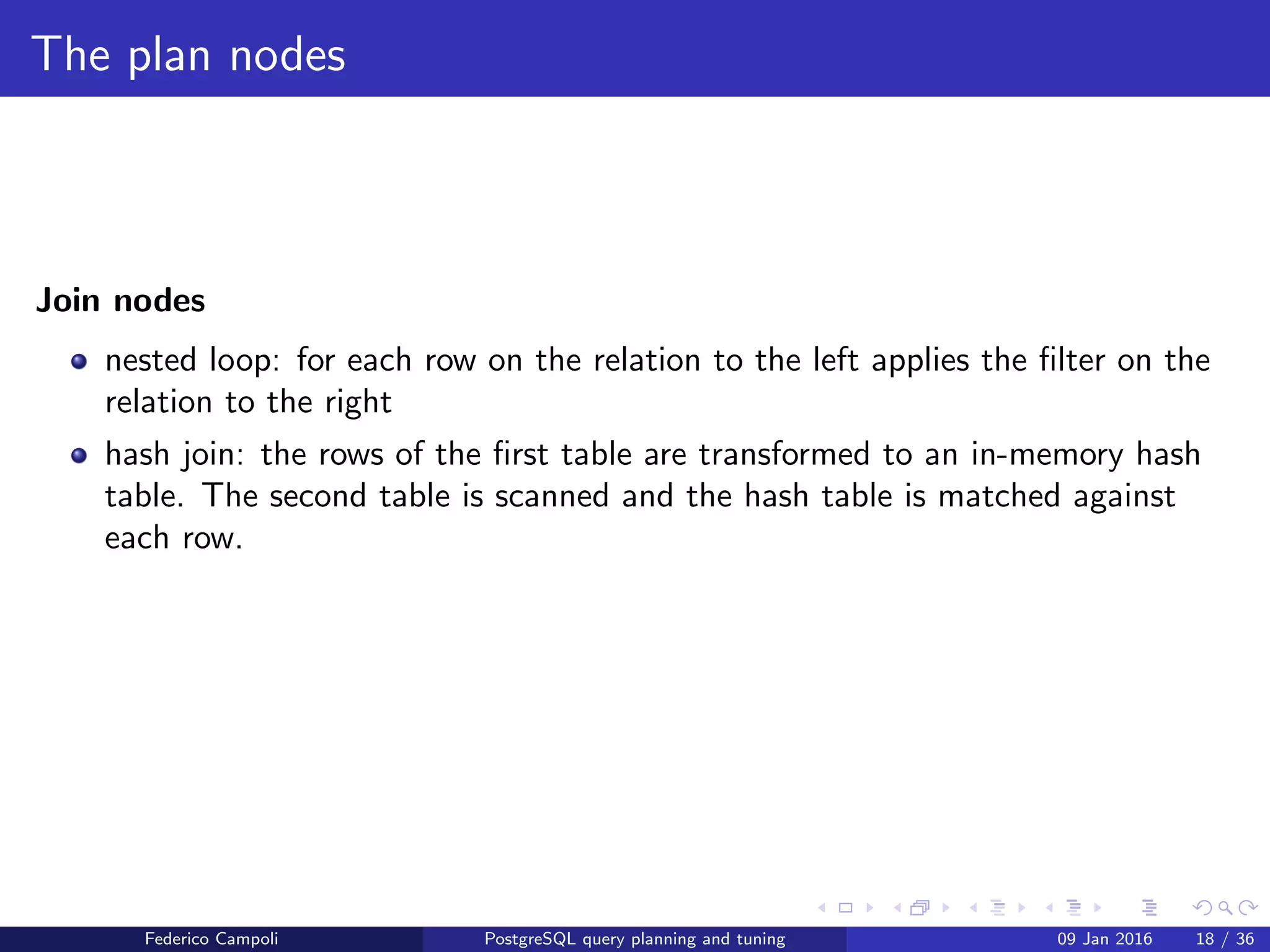
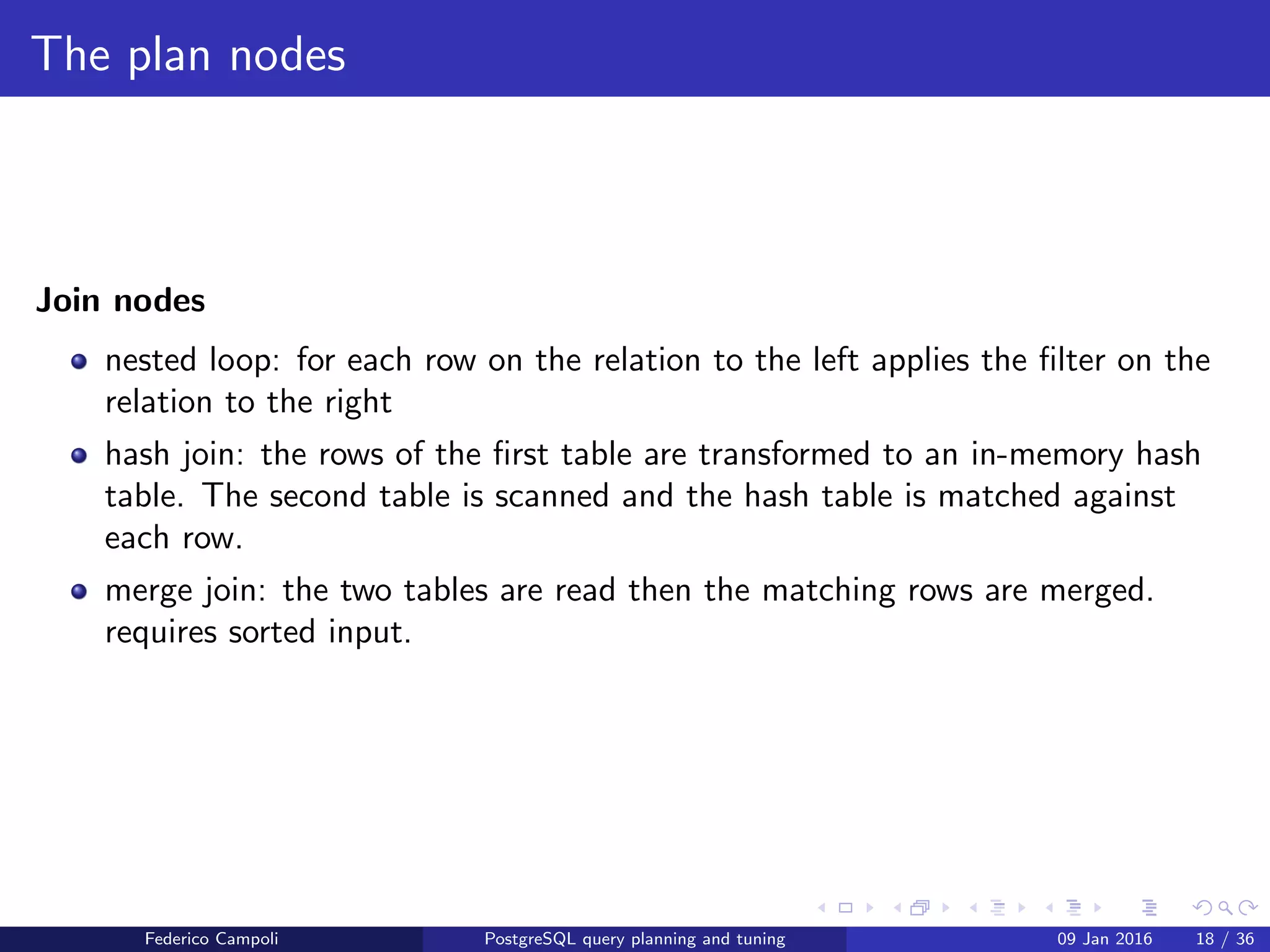
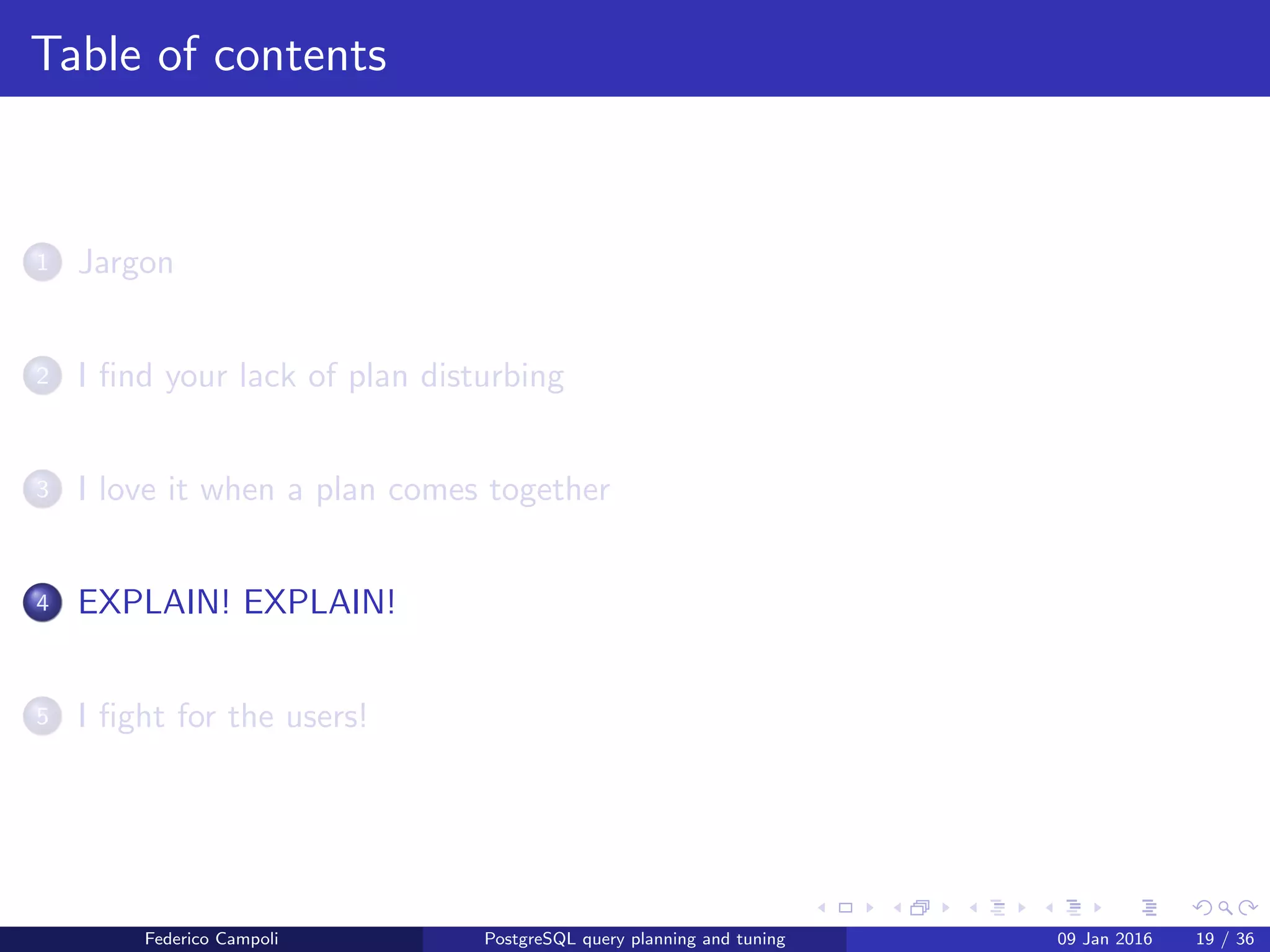
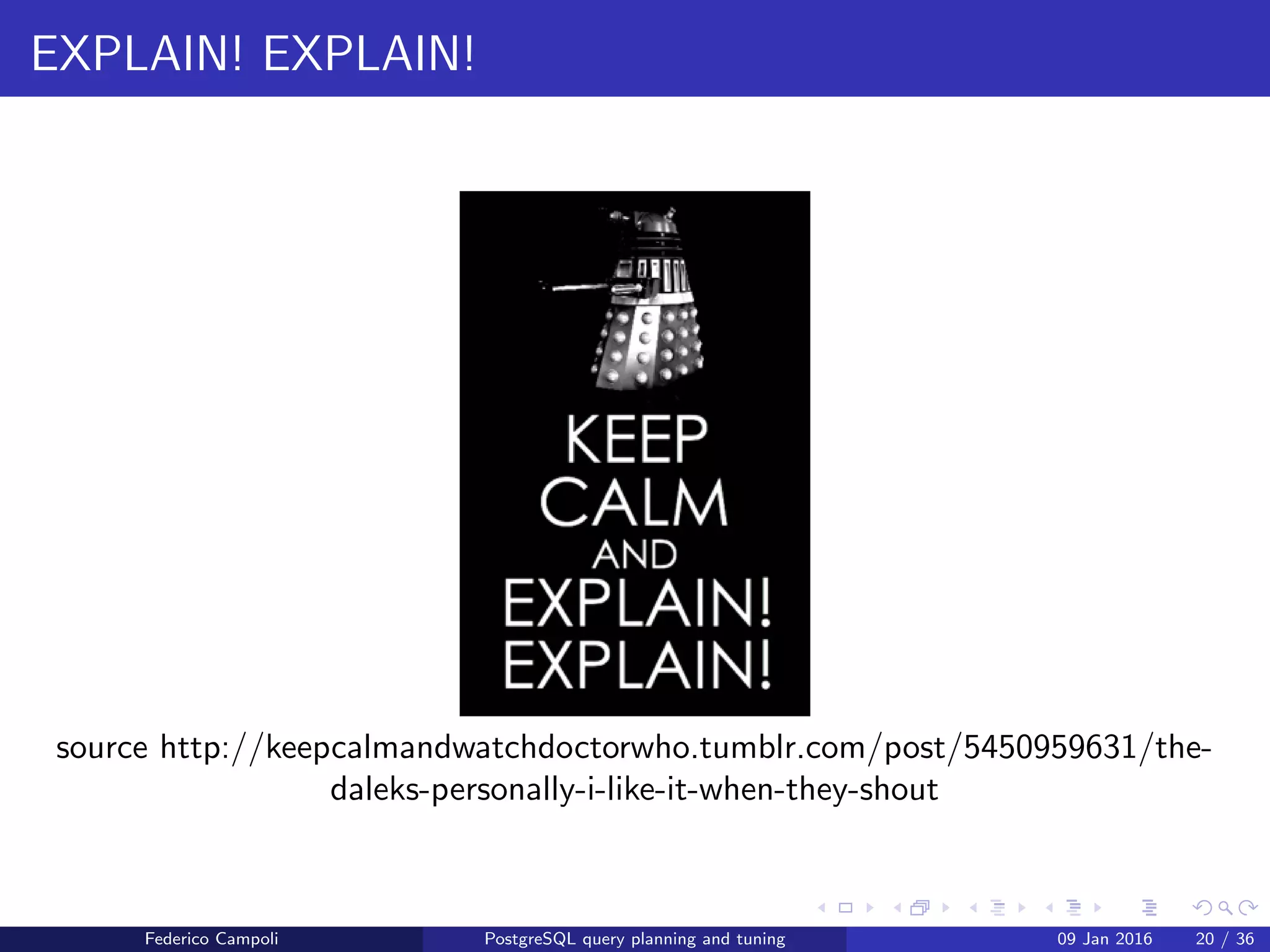
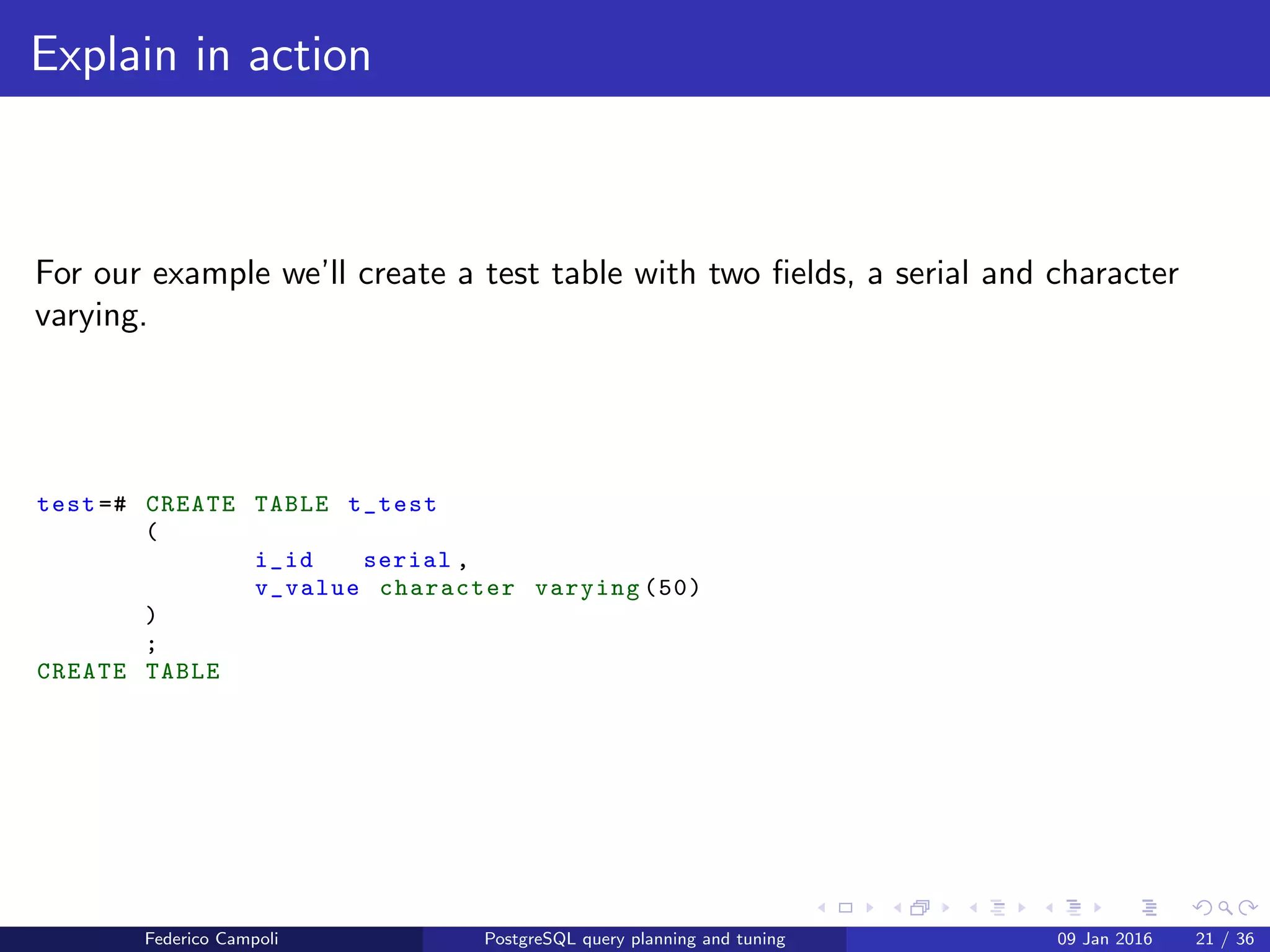
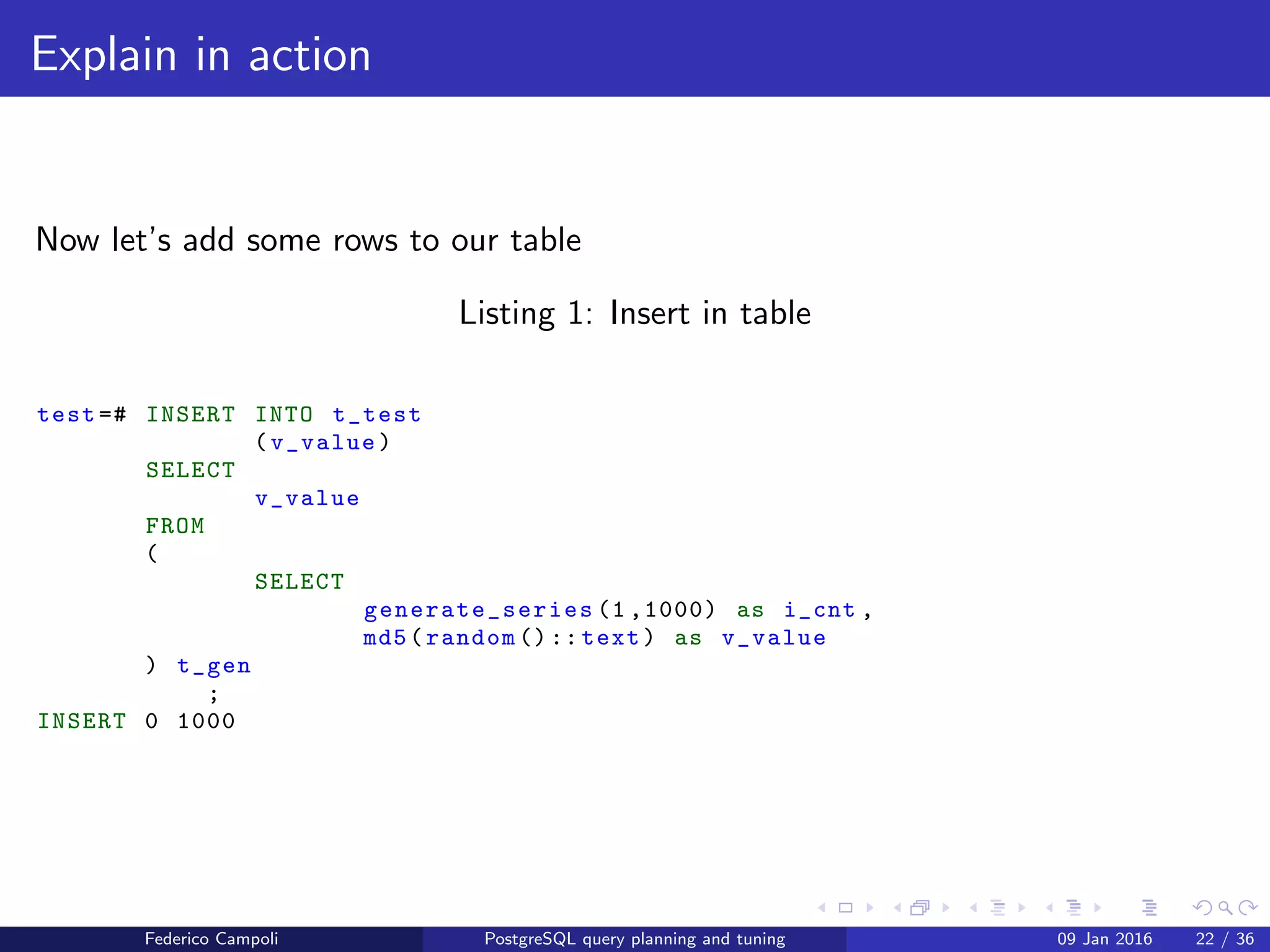
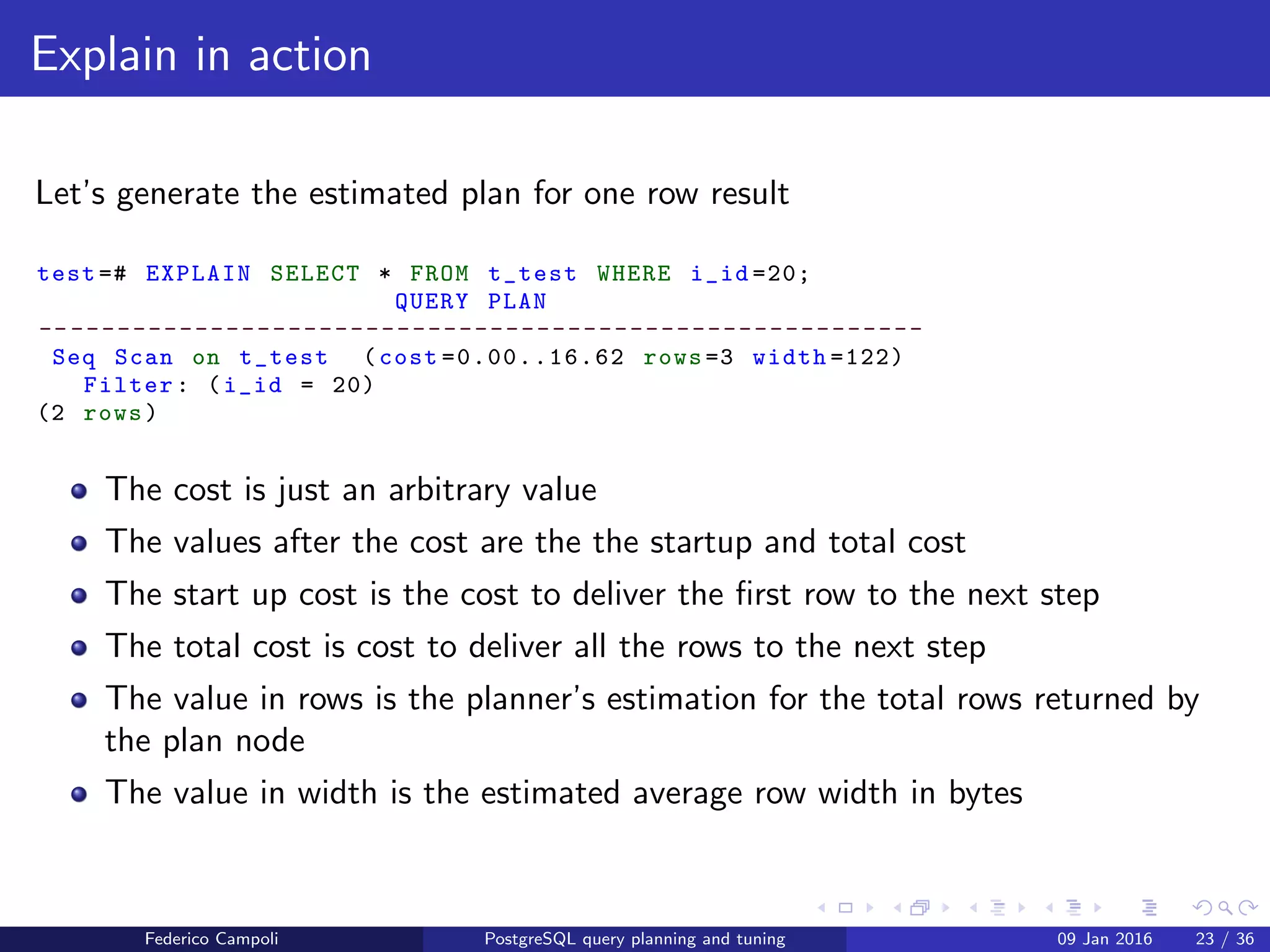
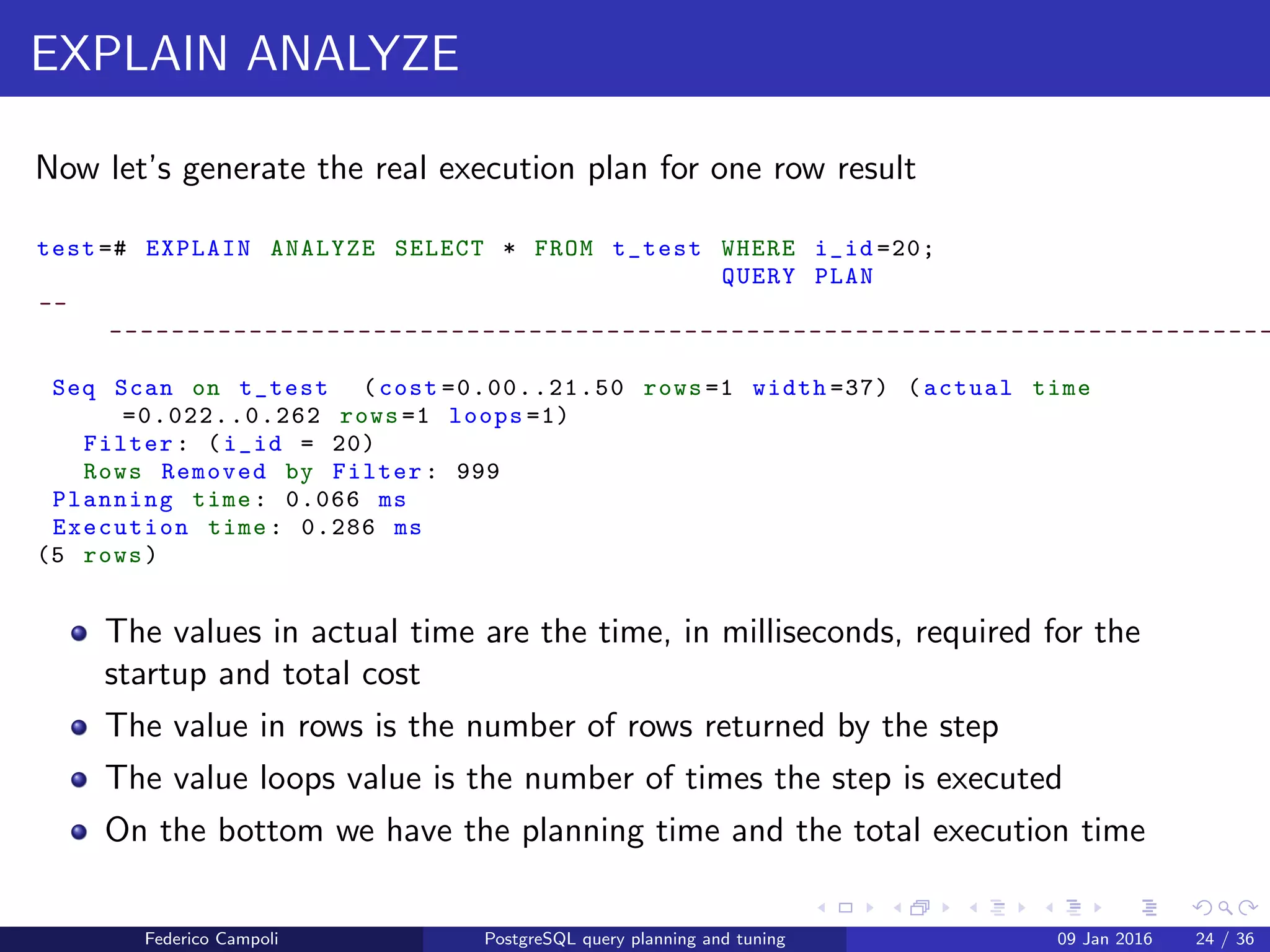
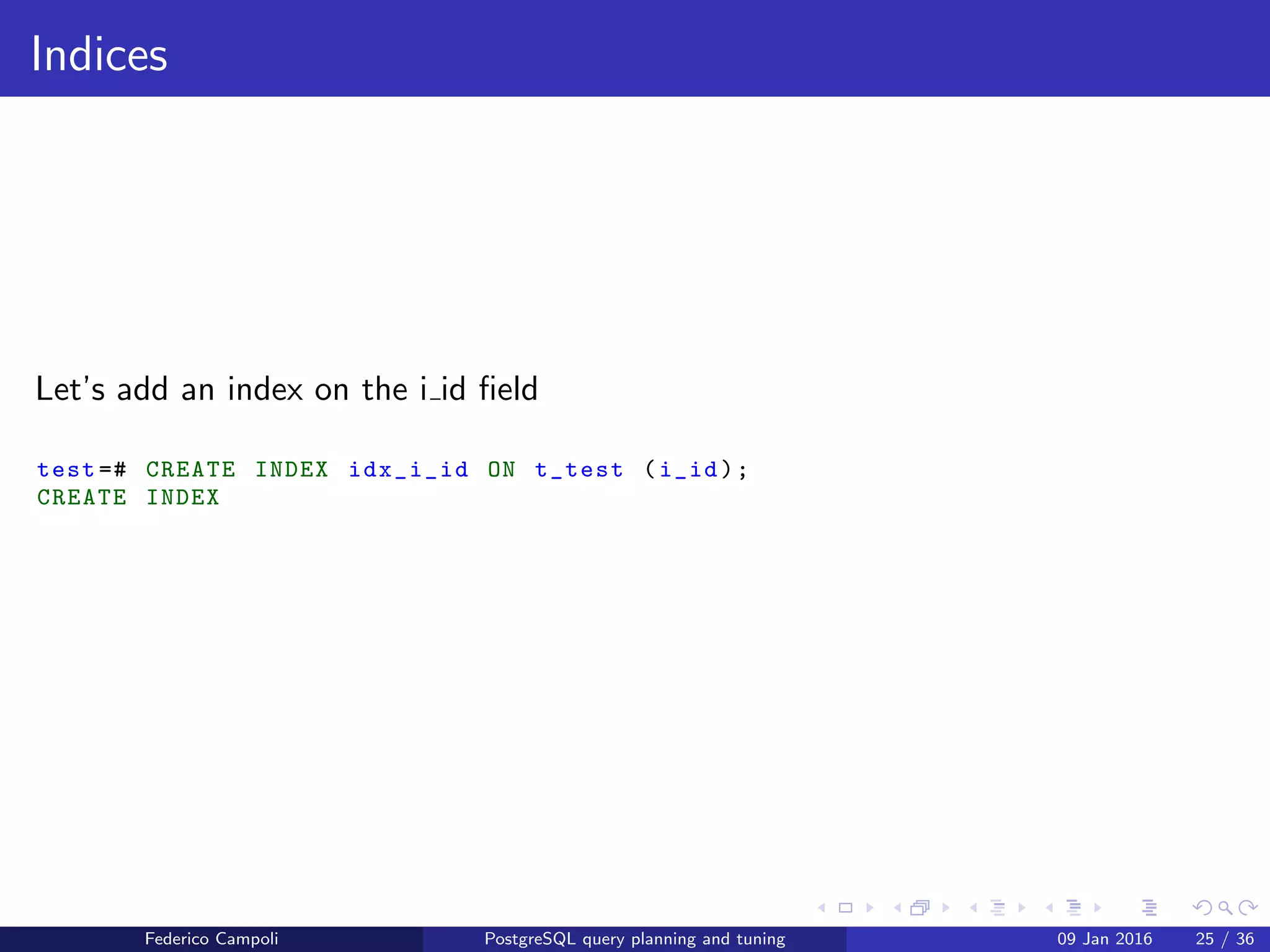
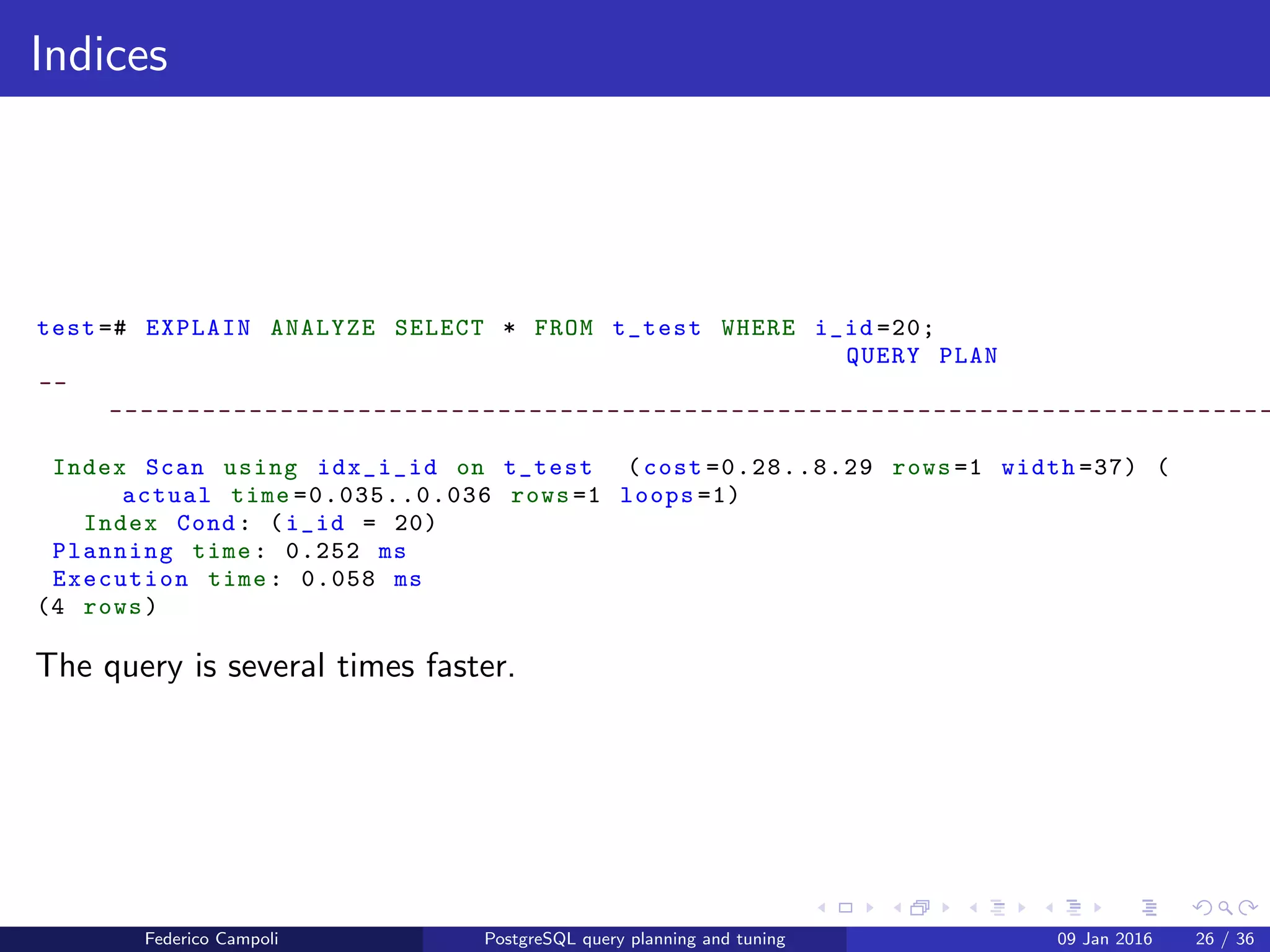
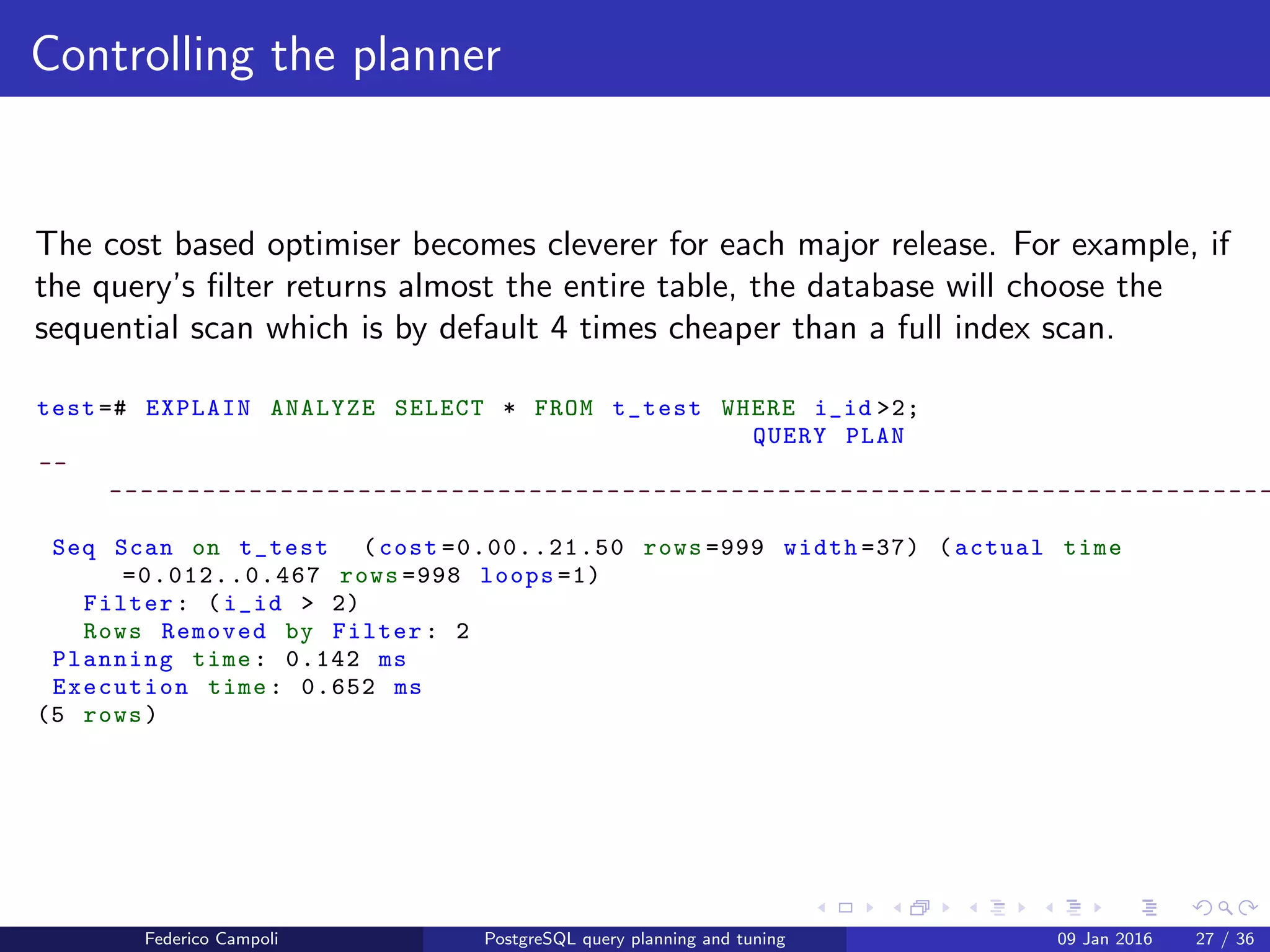
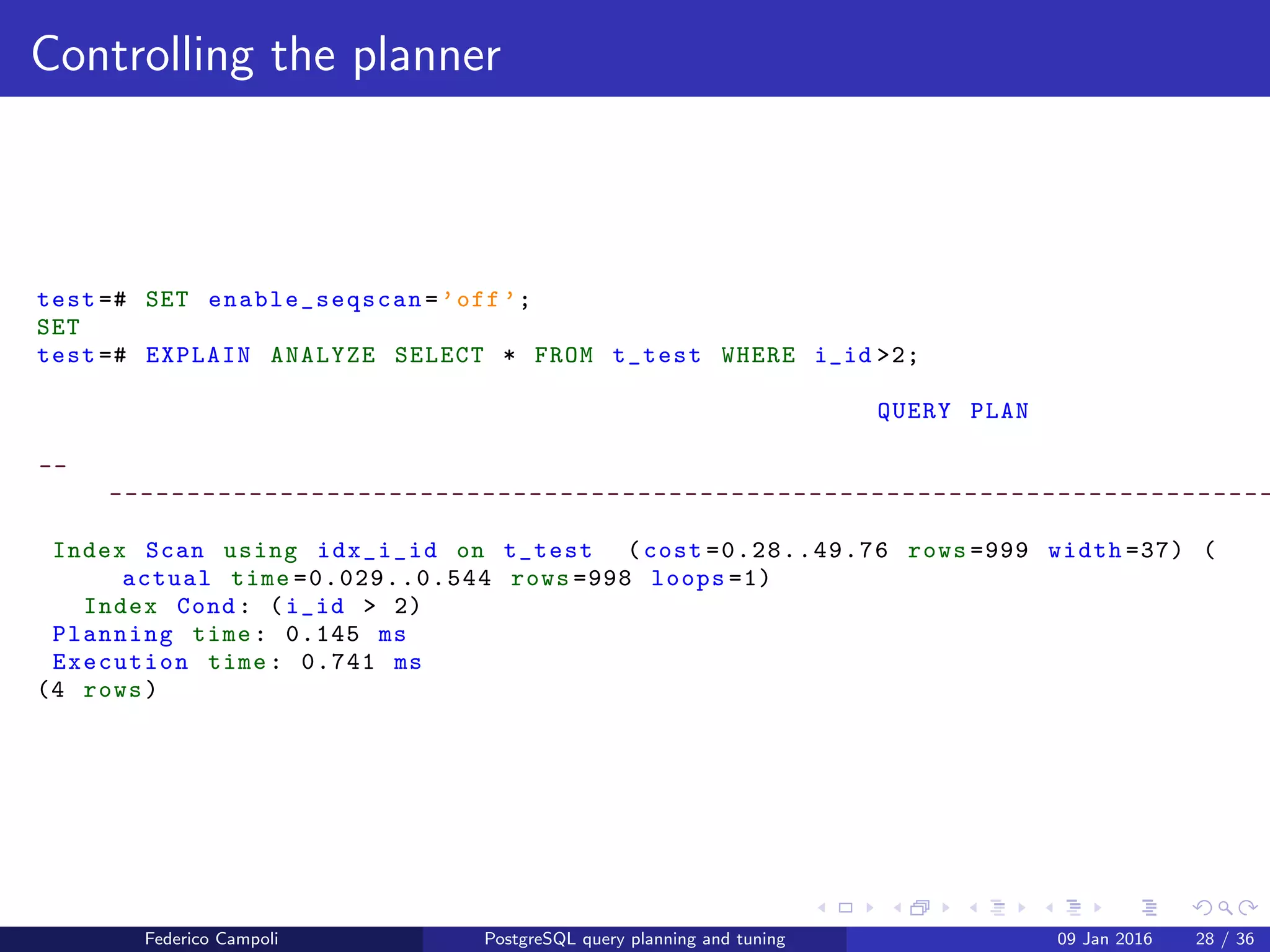
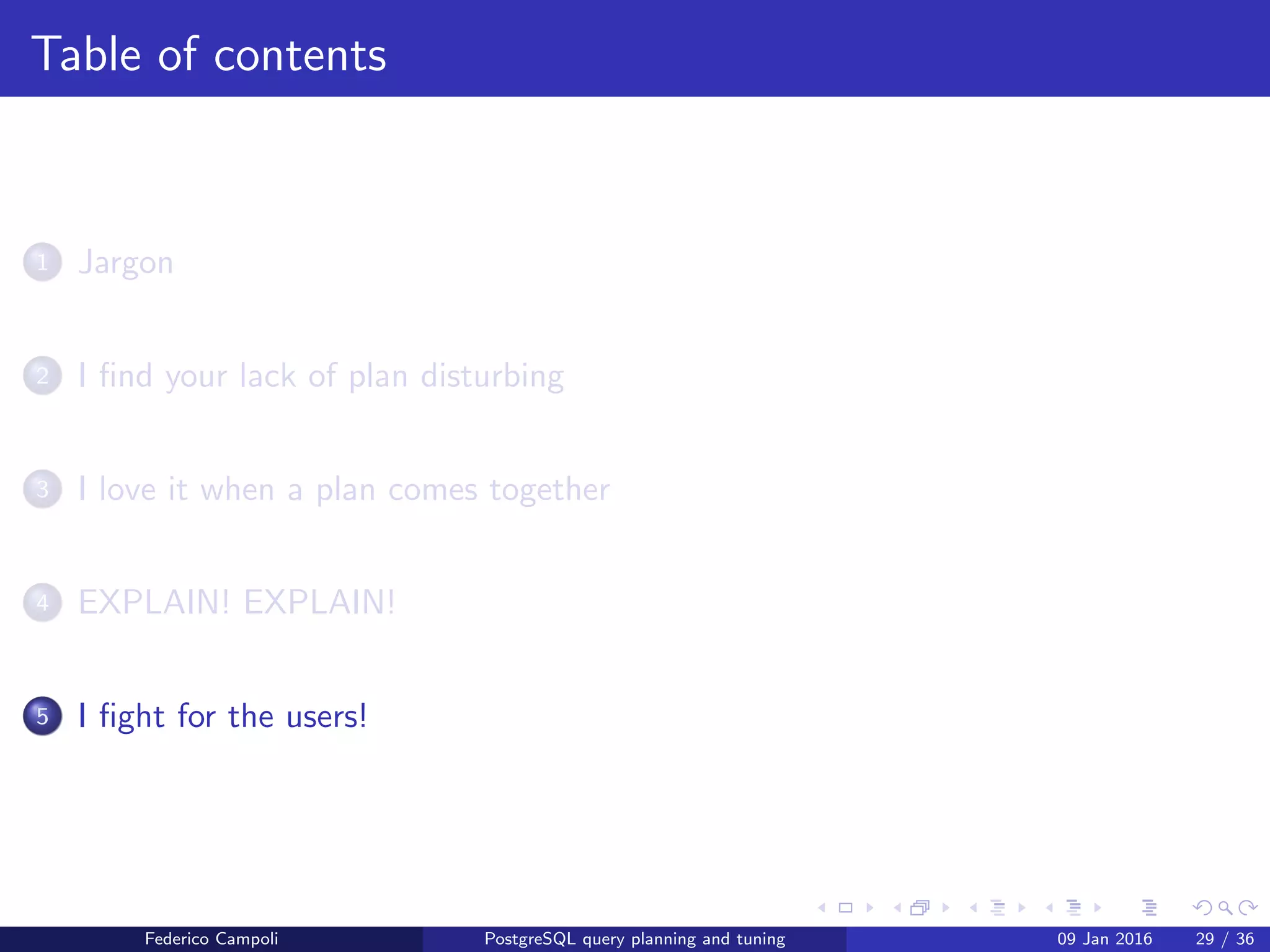
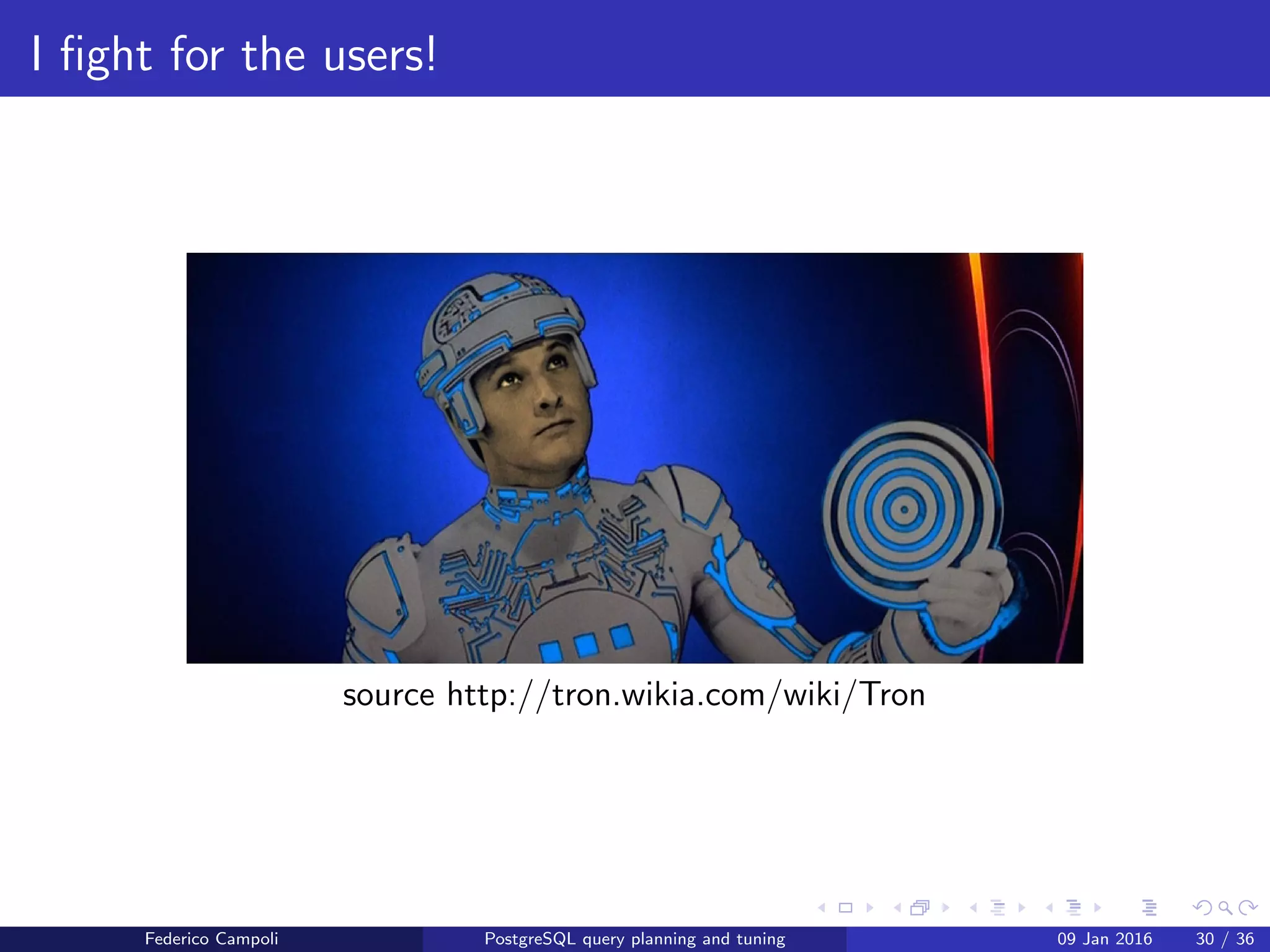
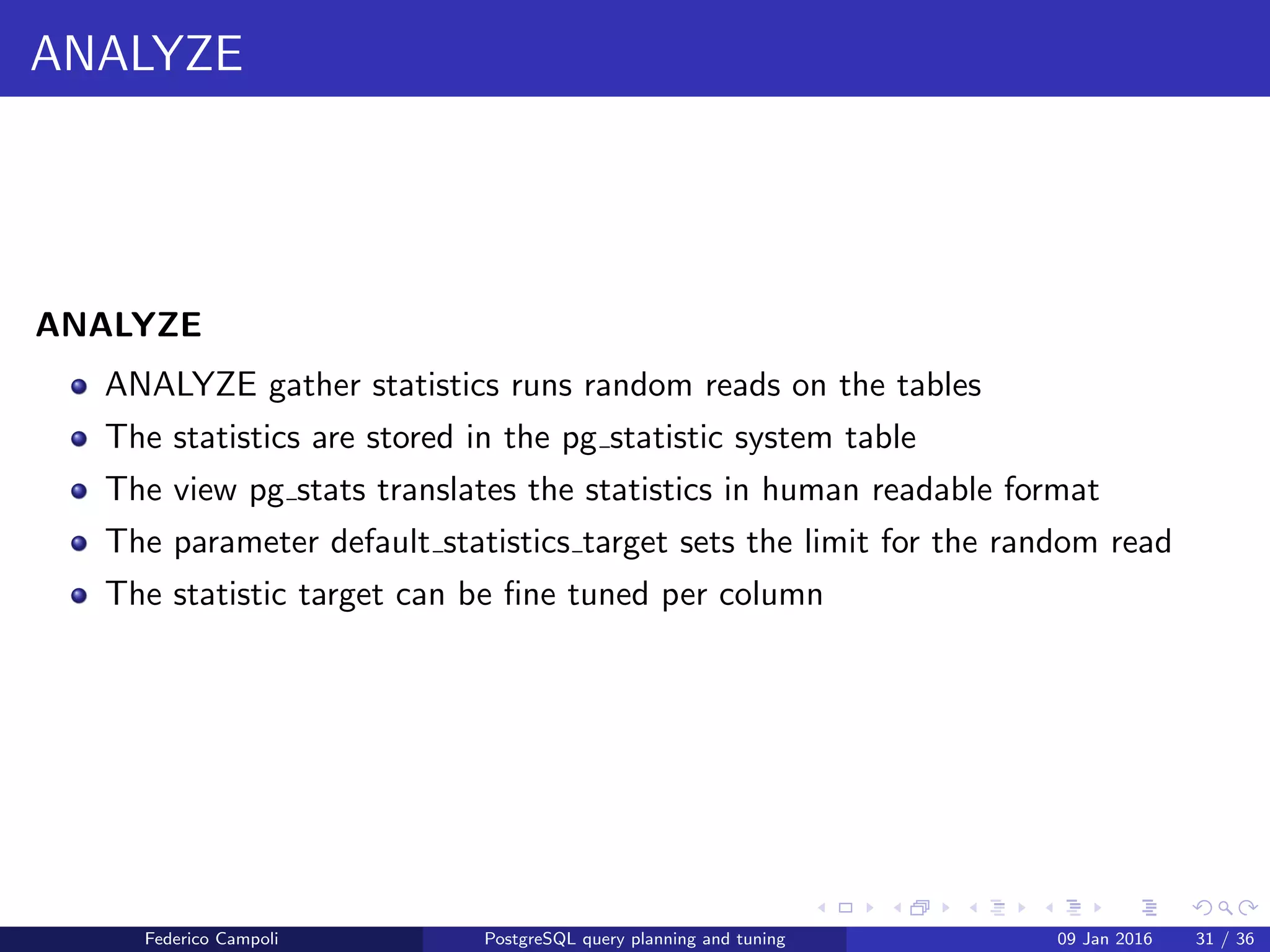
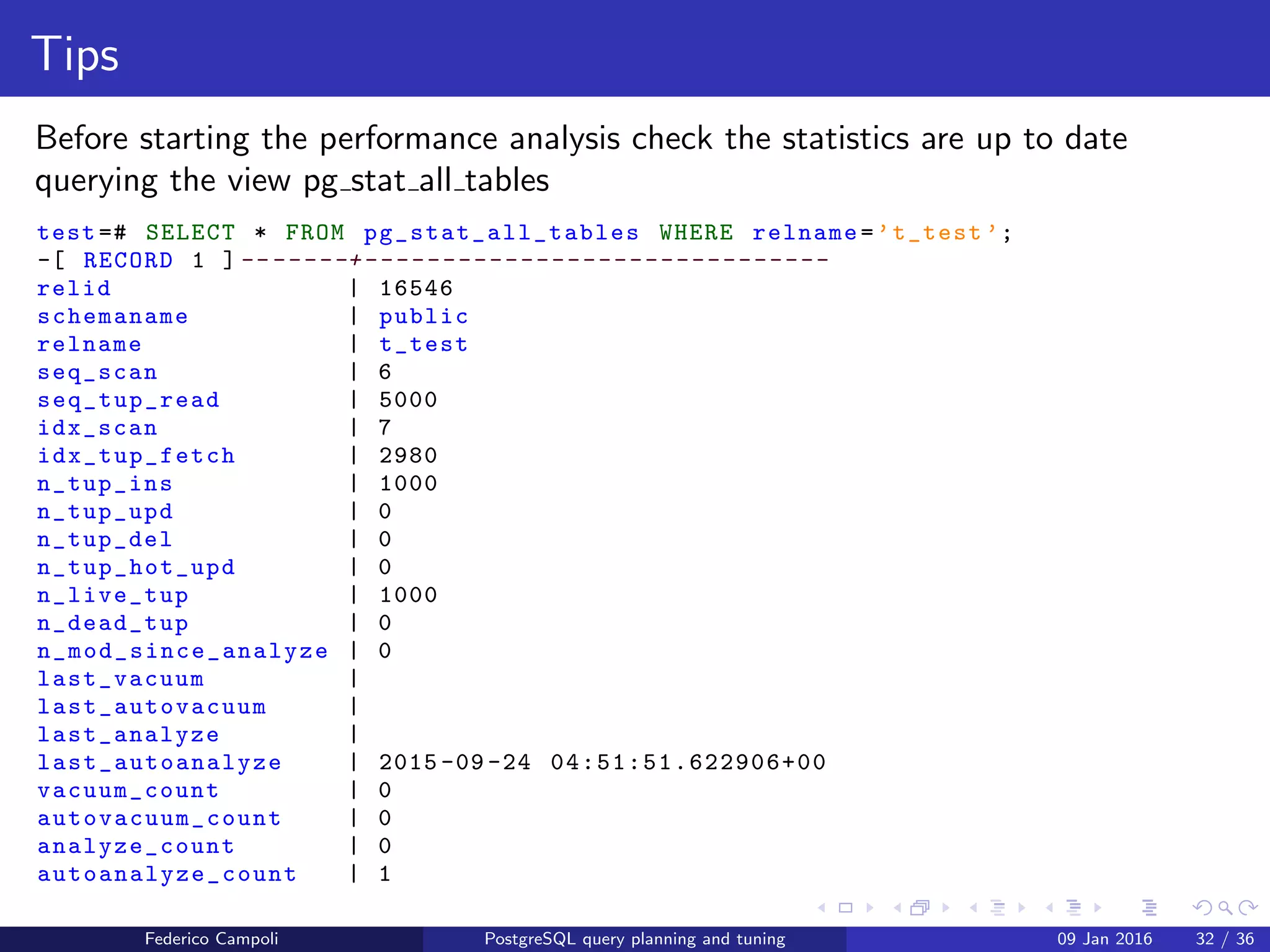
![I fight for the users!
Table statistics
Before starting the performance analysis check the statistics are up to date
querying the view pg stat all tables
test =# SELECT * FROM pg_stat_all_tables WHERE relname=’t_test ’;
-[ RECORD 1 ]-- -----+------------------------------
relid | 16546
schemaname | public
relname | t_test
seq_scan | 6
seq_tup_read | 5000
idx_scan | 7
idx_tup_fetch | 2980
n_tup_ins | 1000
n_tup_upd | 0
n_tup_del | 0
n_tup_hot_upd | 0
n_live_tup | 1000
n_dead_tup | 0
n_mod_since_analyze | 0
last_vacuum |
last_autovacuum |
last_analyze |
last_autoanalyze | 2015 -09 -24 04:51:51.622906+00
vacuum_count | 0
autovacuum_count | 0
analyze_count | 0
autoanalyze_count | 1
Federico Campoli PostgreSQL query planning and tuning 03 Mar 2016 40 / 47](https://image.slidesharecdn.com/sqlquerytuning-150926100053-lva1-app6891/75/PostgreSql-query-planning-and-tuning-42-2048.jpg)
![I fight for the users!
index statistics
Before starting the performance analysis check the indices are used querying the
view pg stat all indexes
test =# SELECT * FROM pg_stat_all_indexes WHERE relname=’t_test ’;
-[ RECORD 1 ]-+ ---------
relid | 16546
indexrelid | 16552
schemaname | public
relname | t_test
indexrelname | idx_i_id
idx_scan | 7
idx_tup_read | 2980
idx_tup_fetch | 2980
Federico Campoli PostgreSQL query planning and tuning 03 Mar 2016 41 / 47](https://image.slidesharecdn.com/sqlquerytuning-150926100053-lva1-app6891/75/PostgreSql-query-planning-and-tuning-43-2048.jpg)
